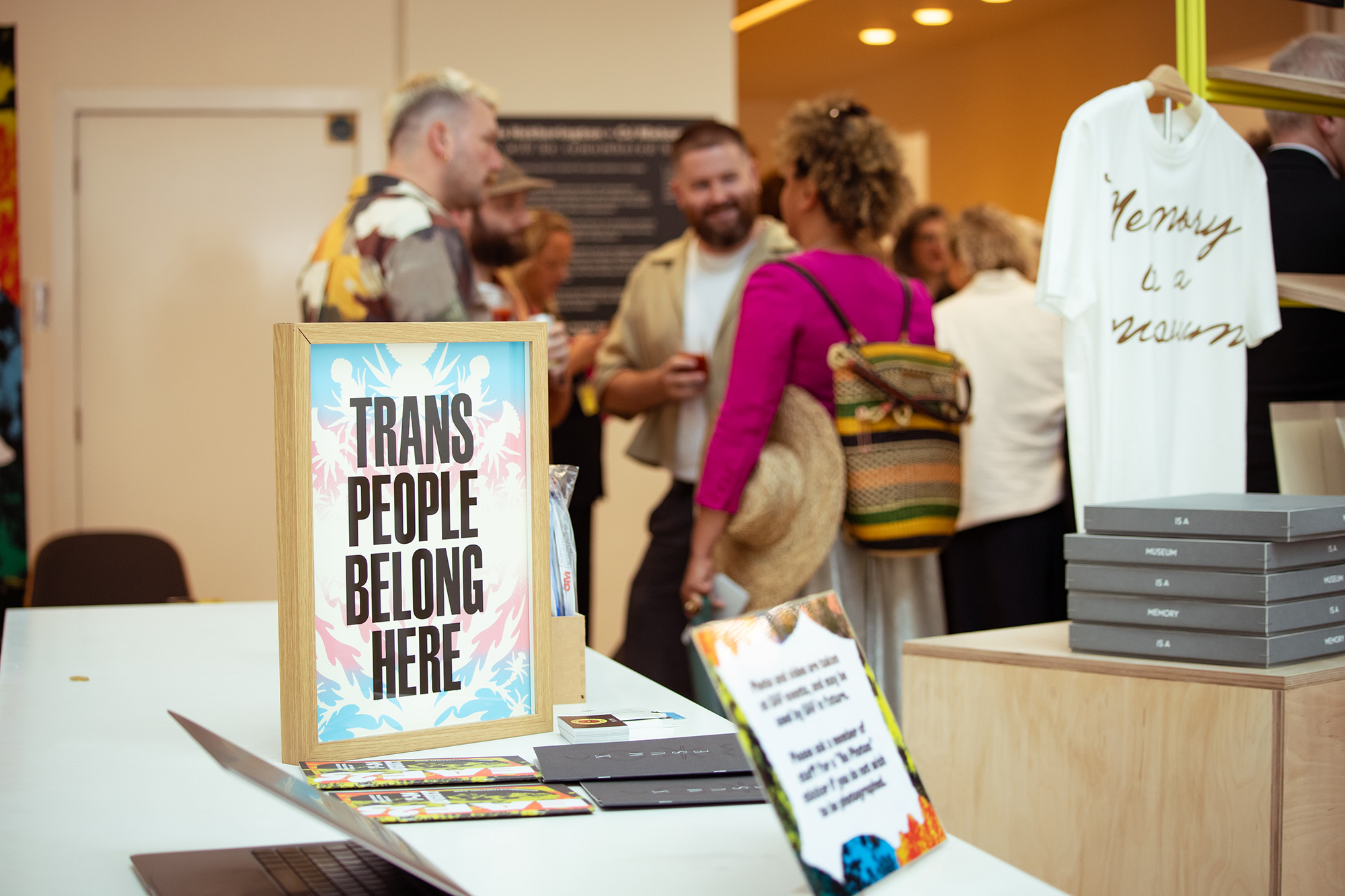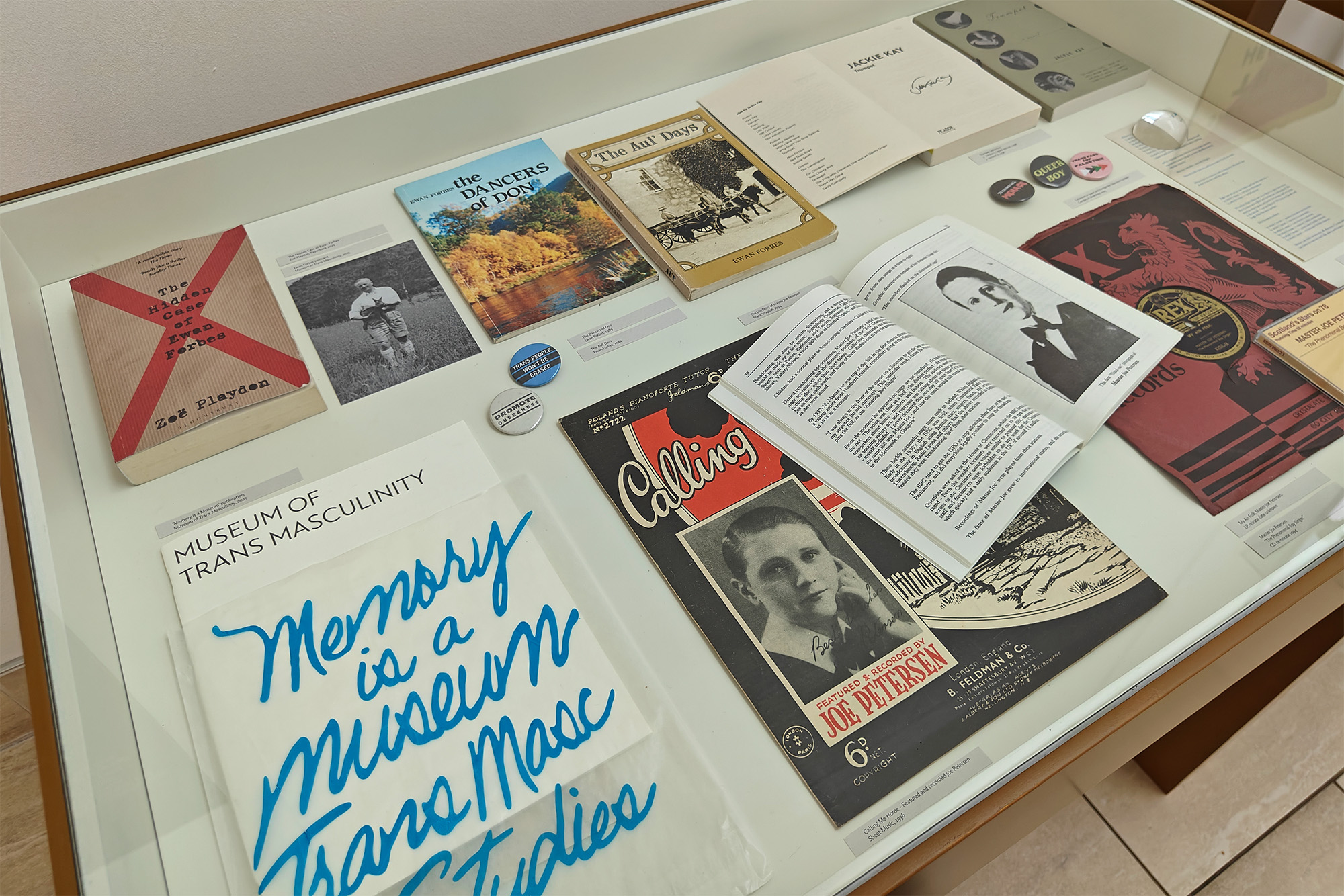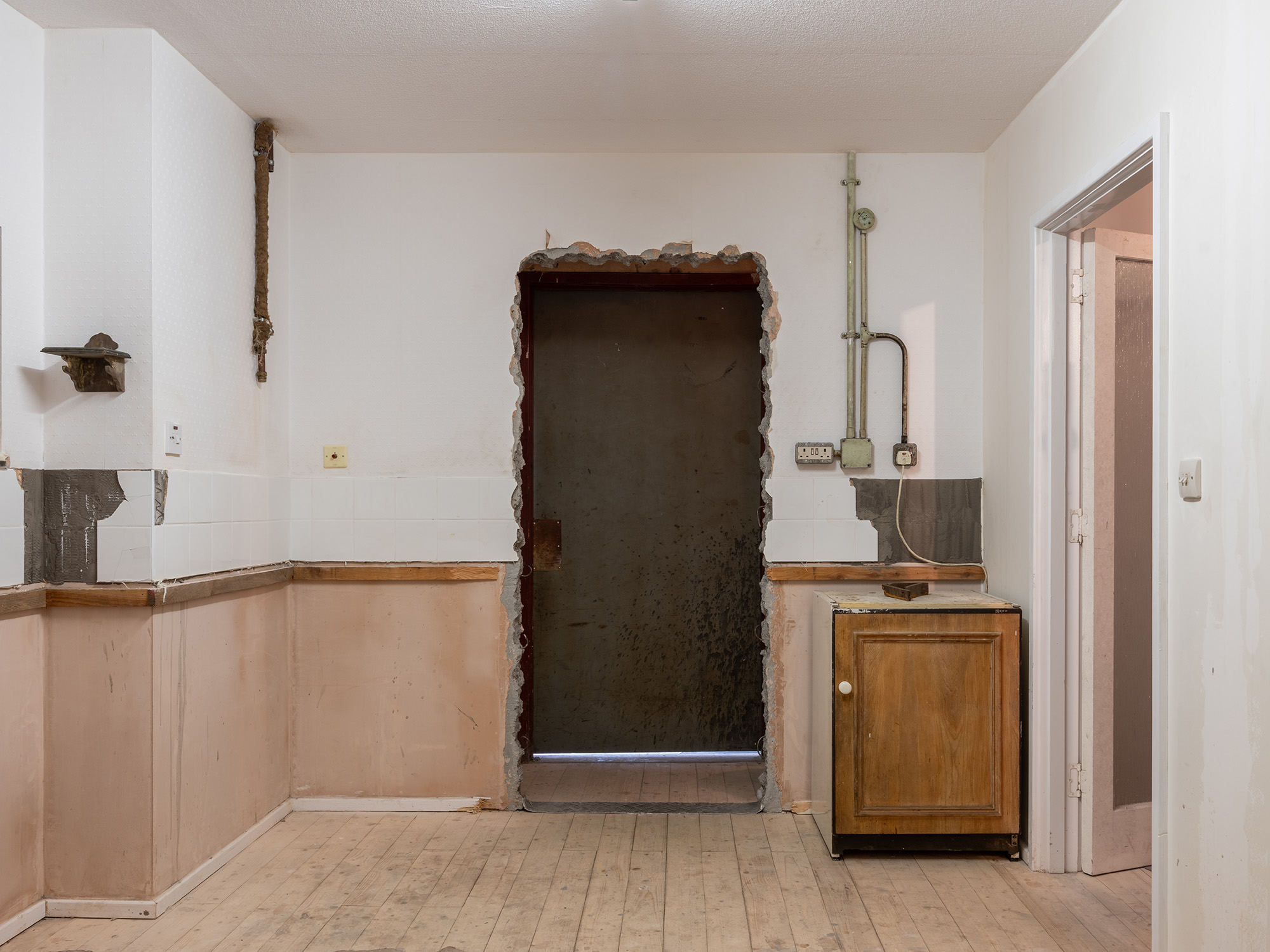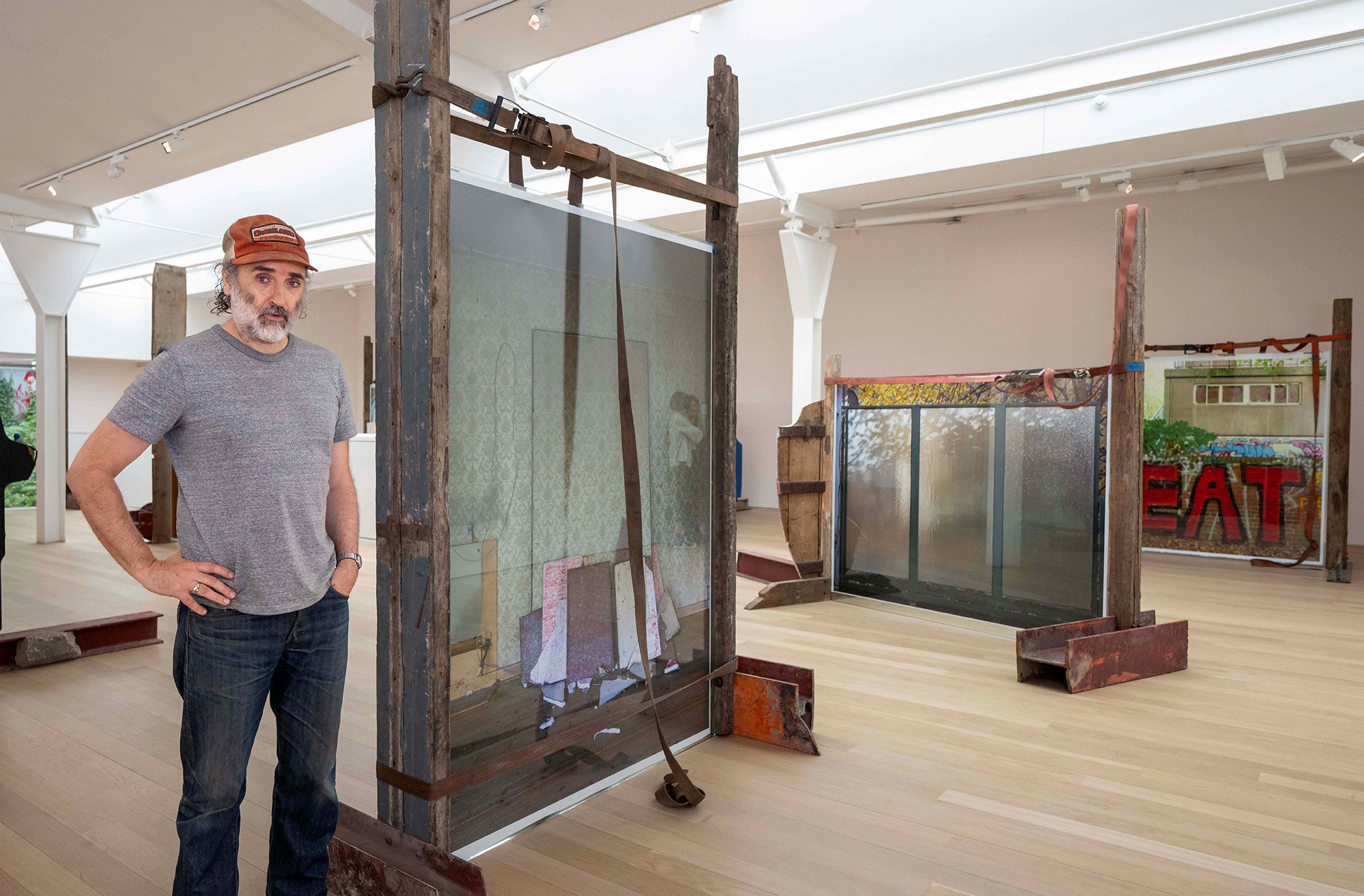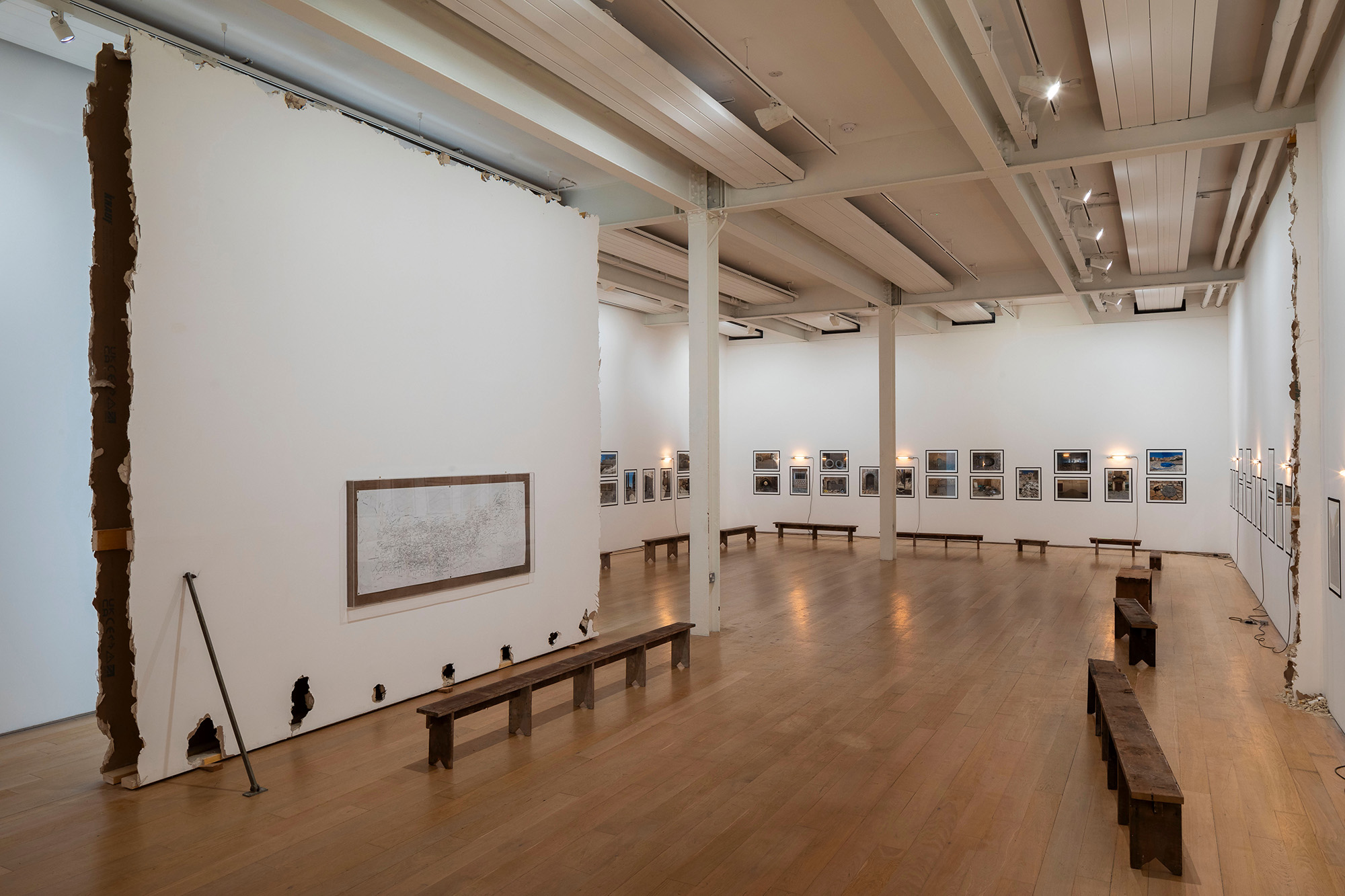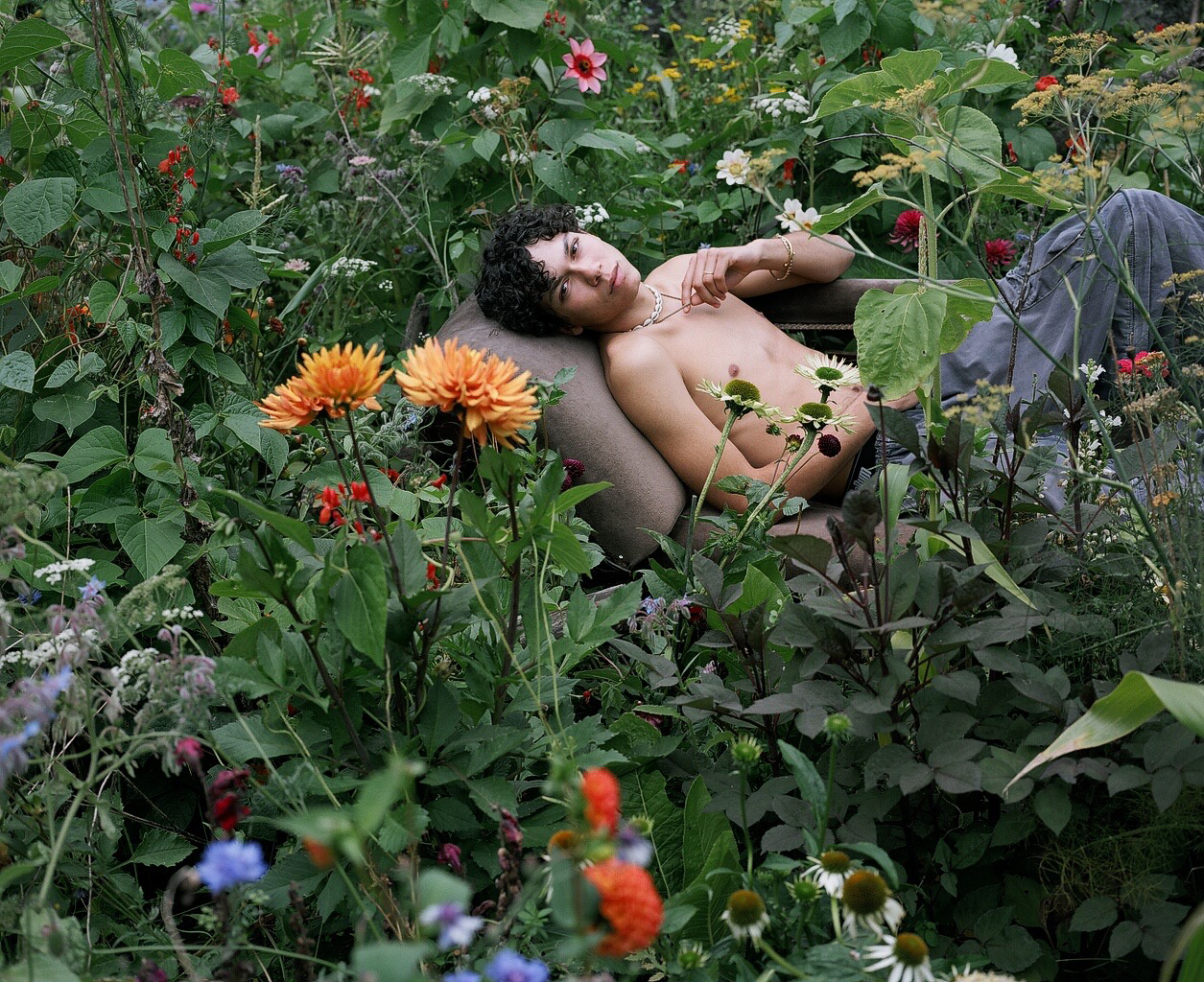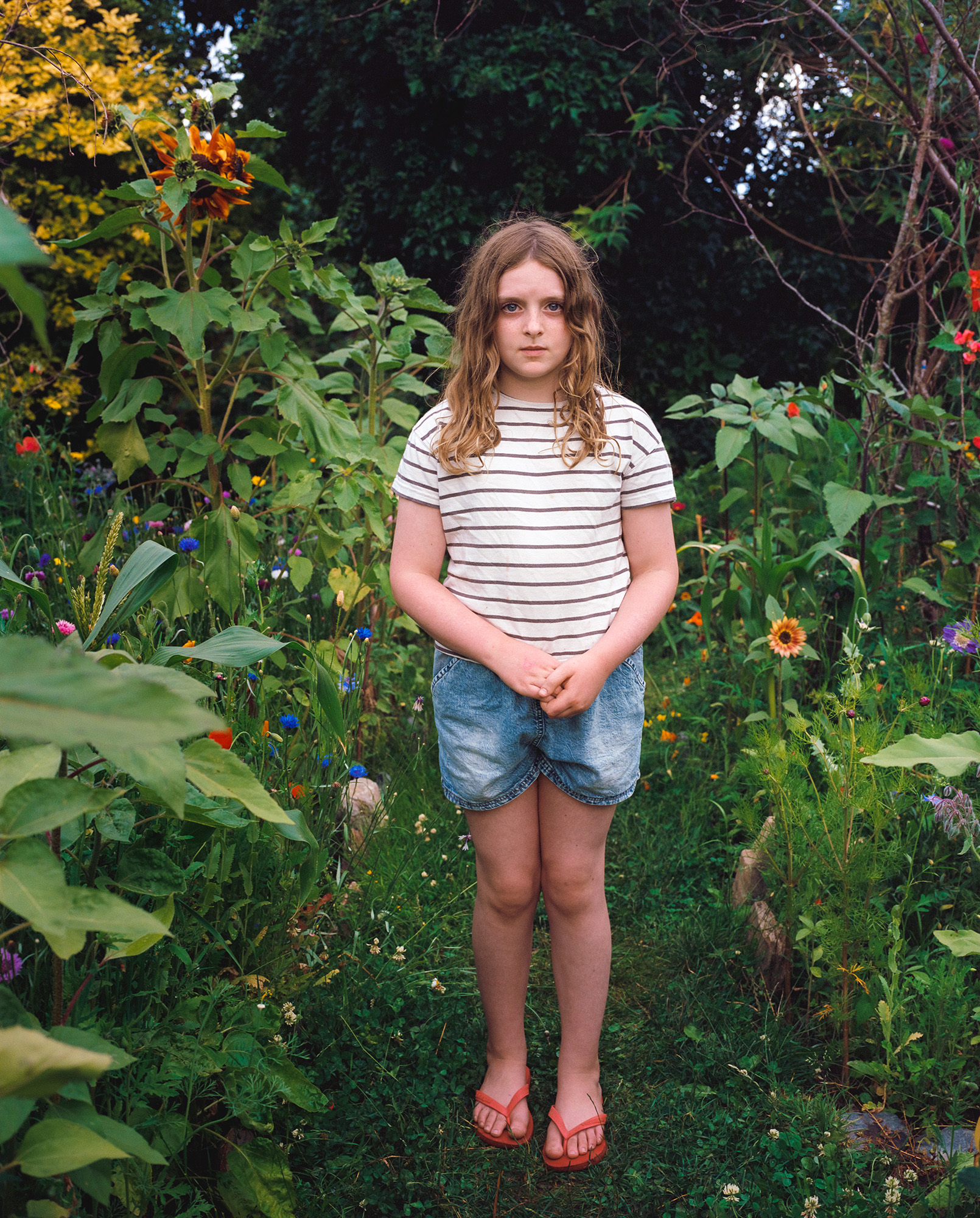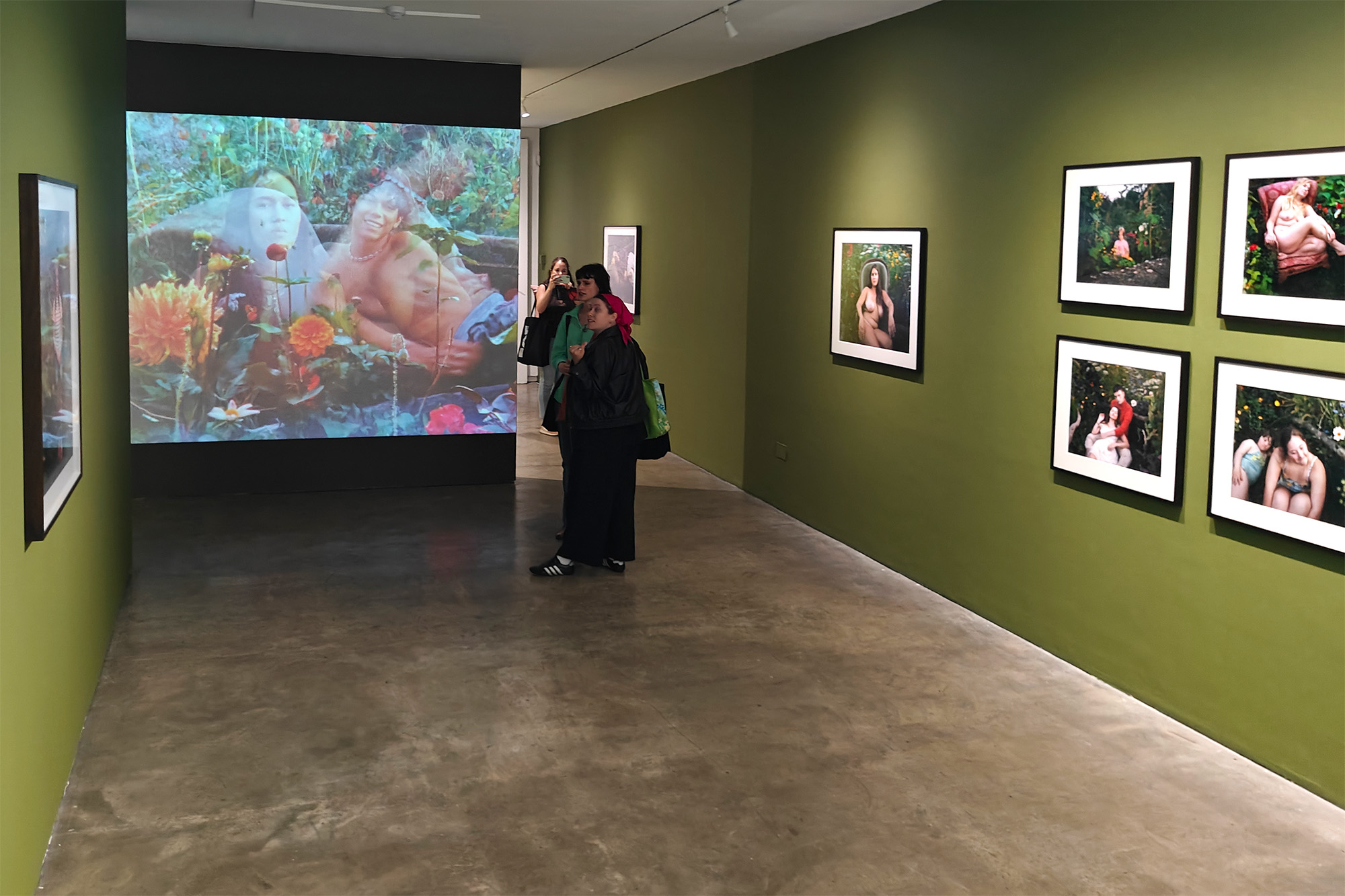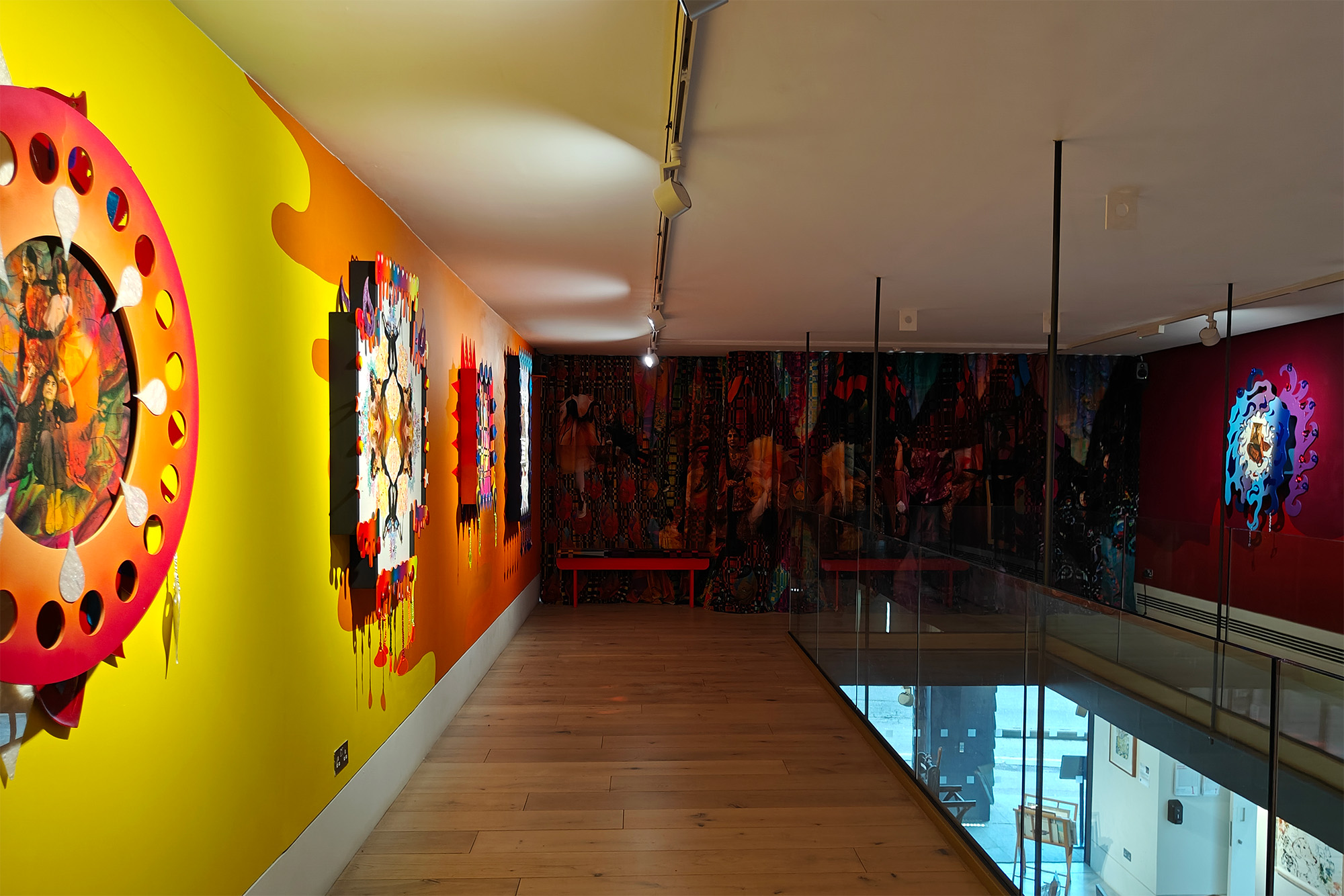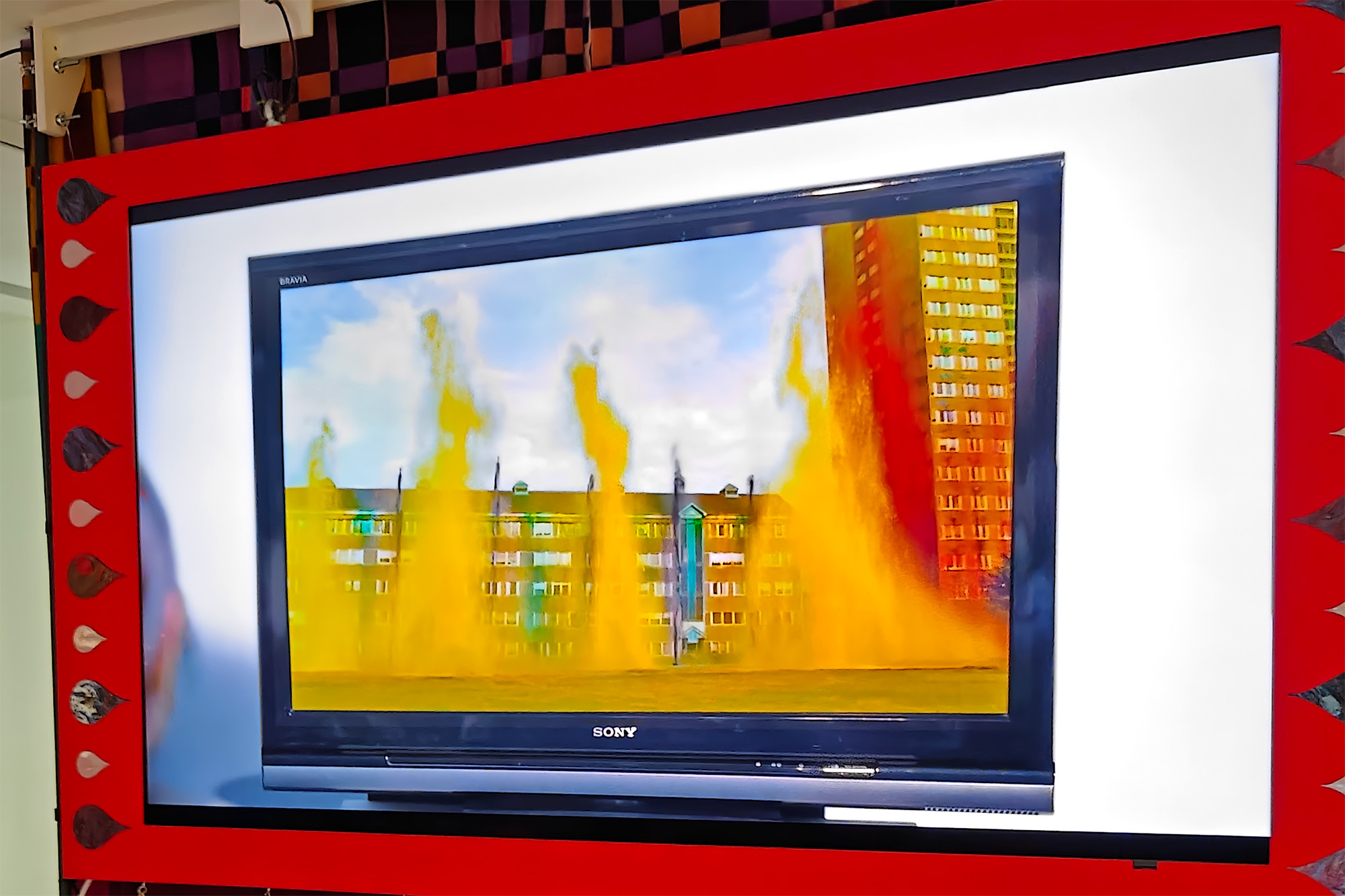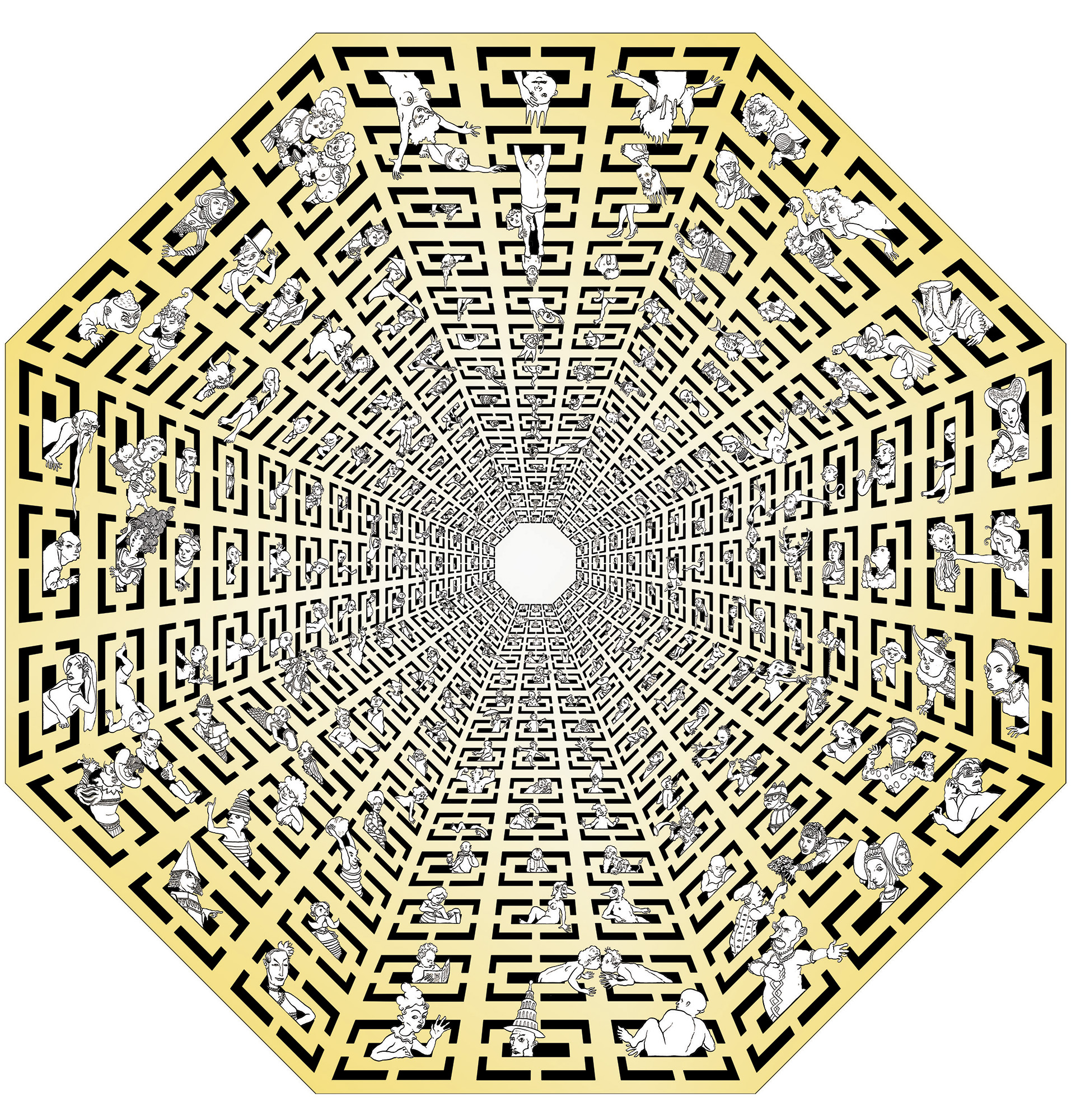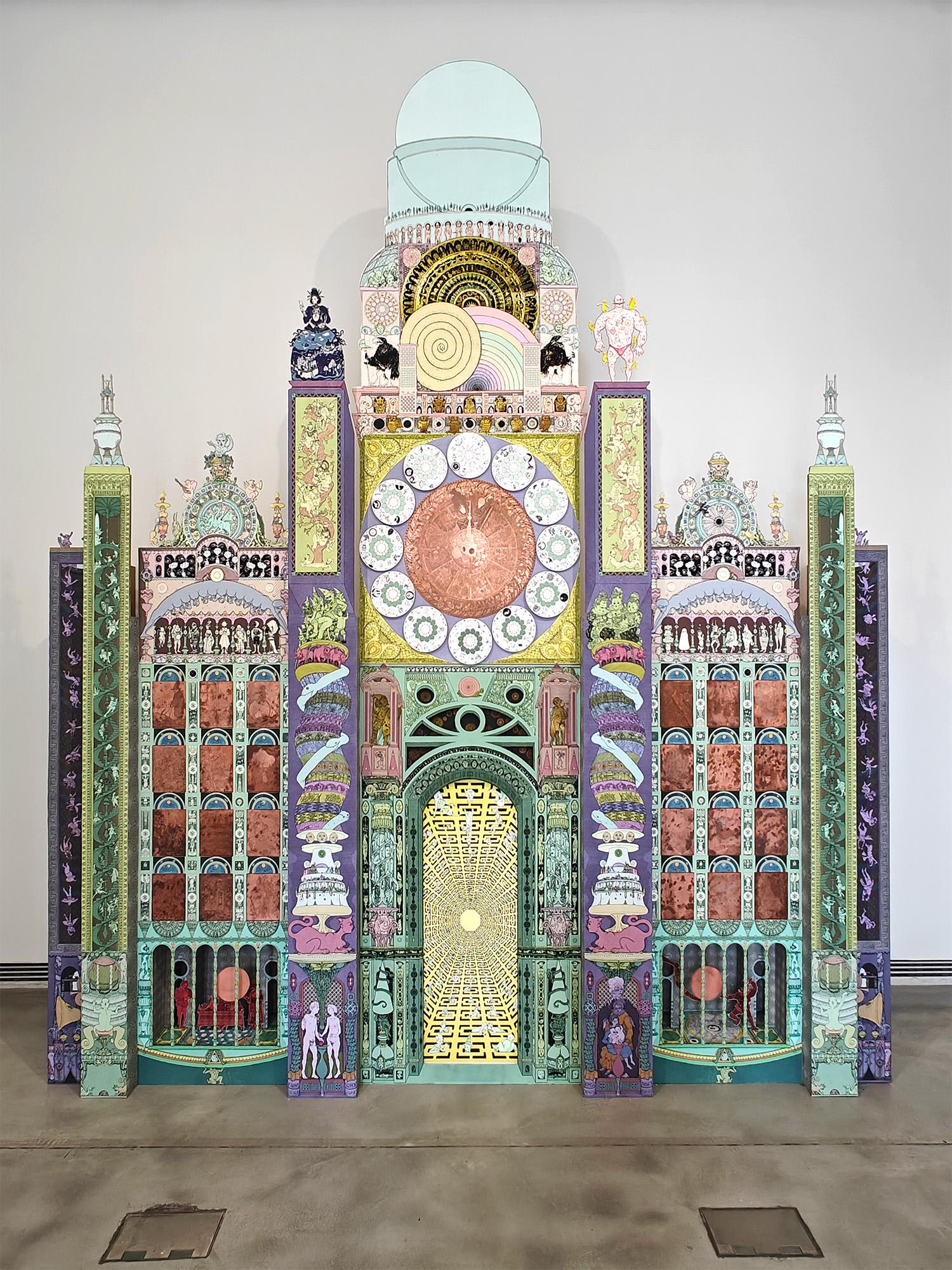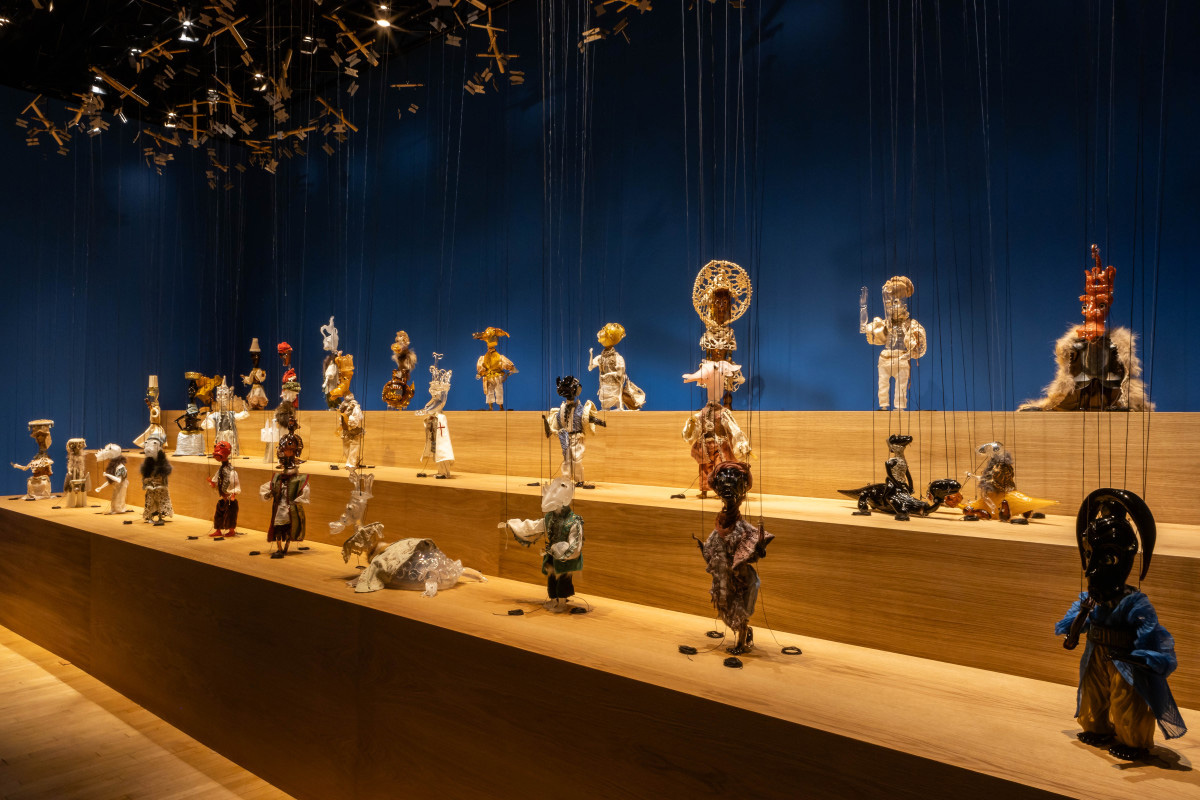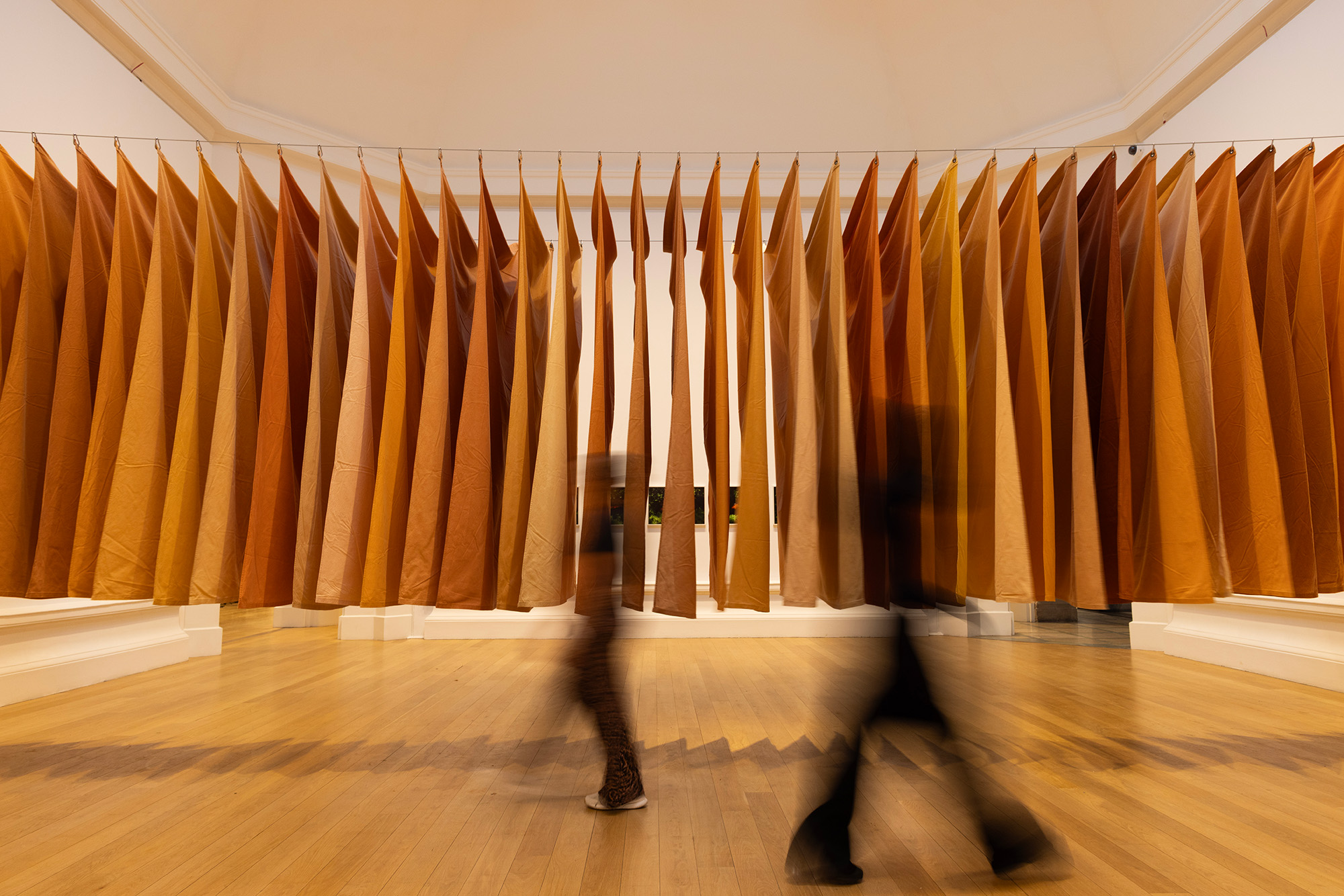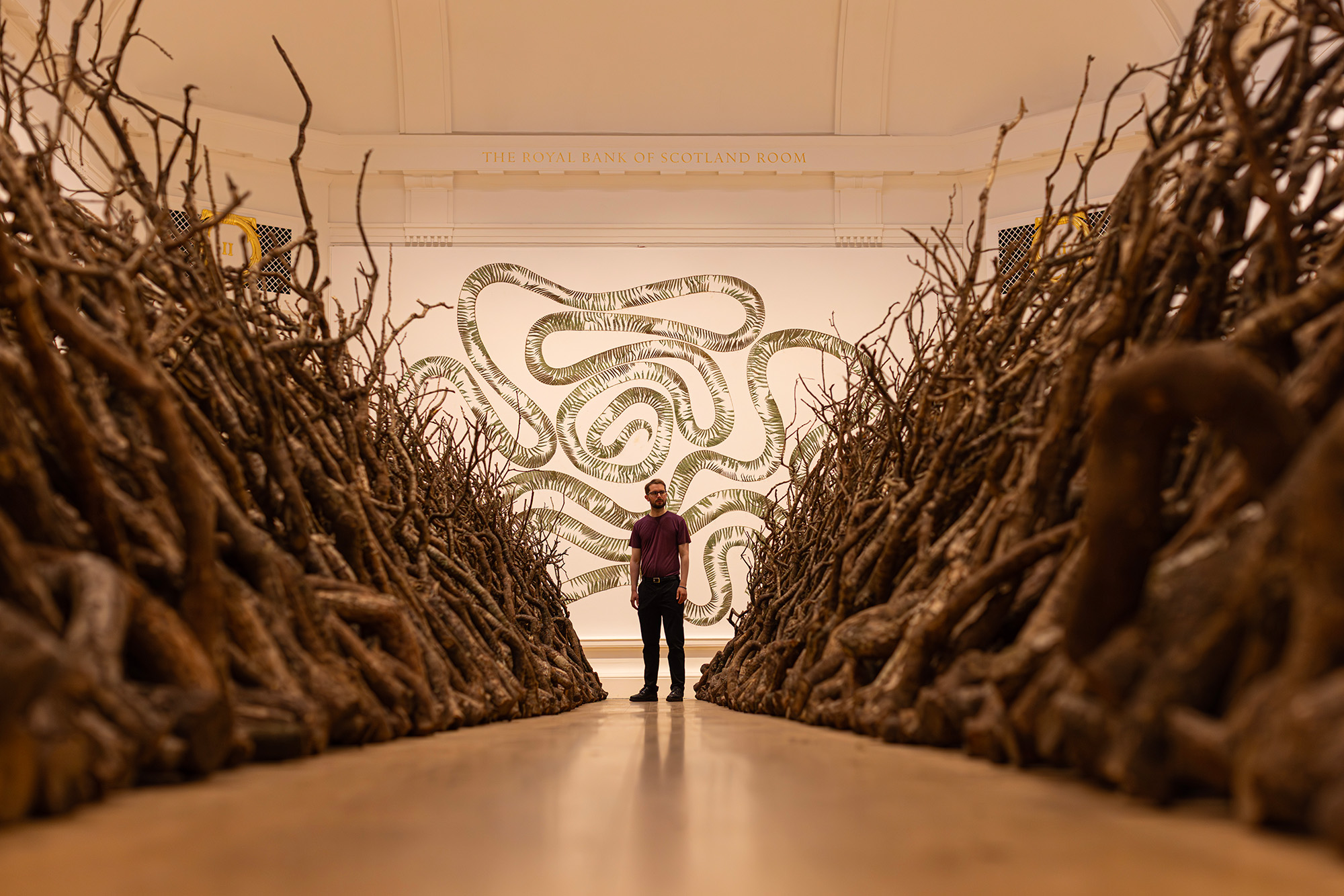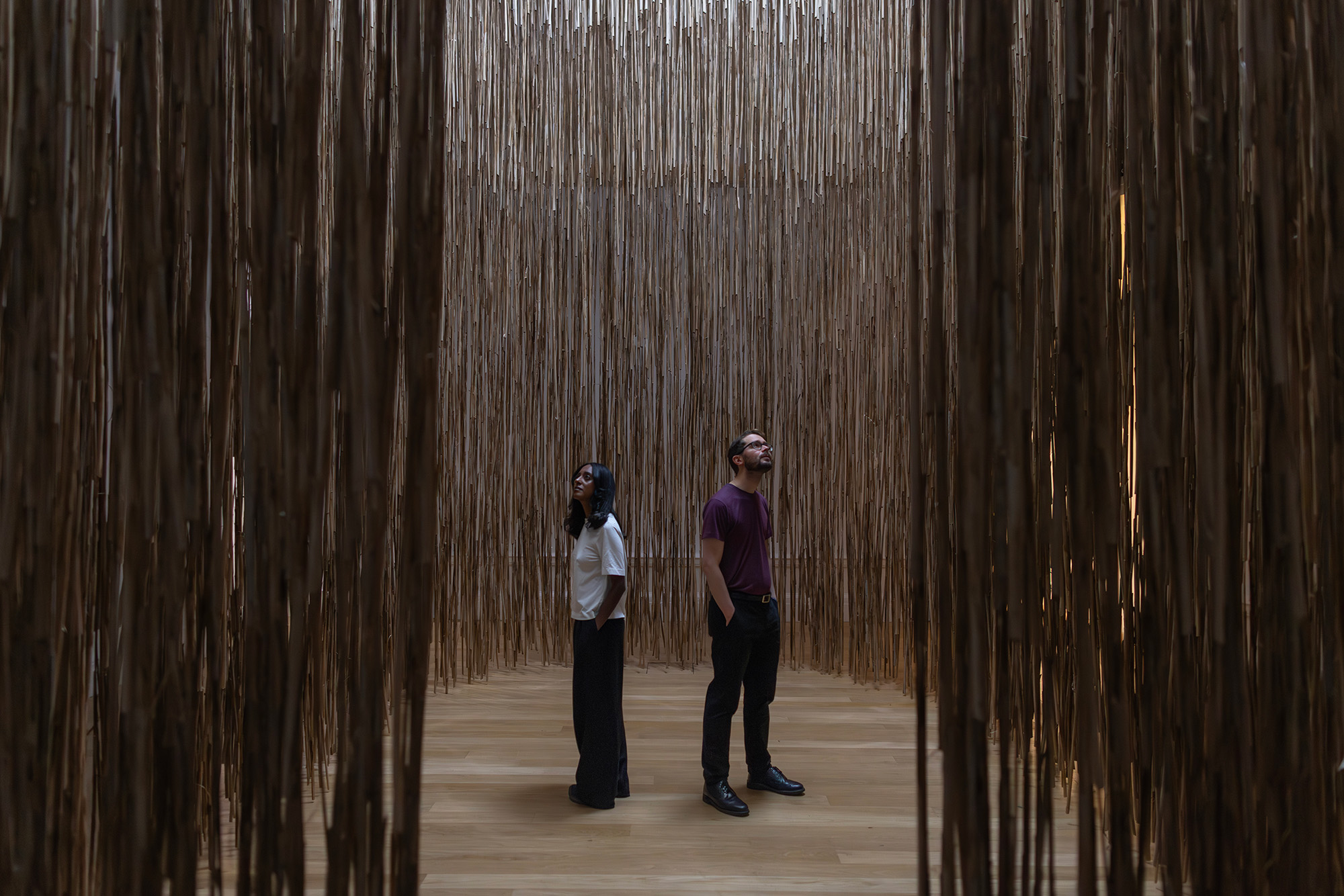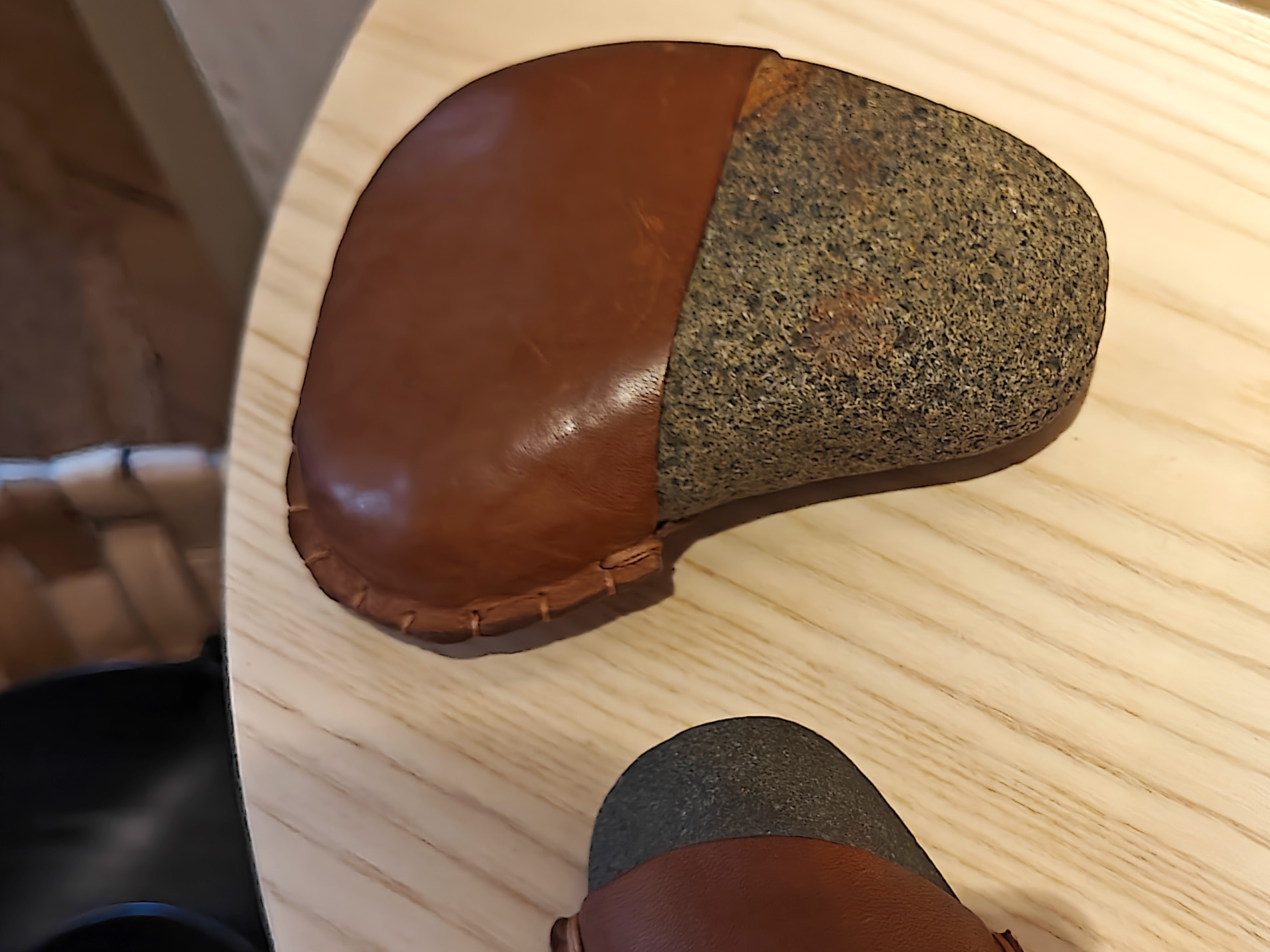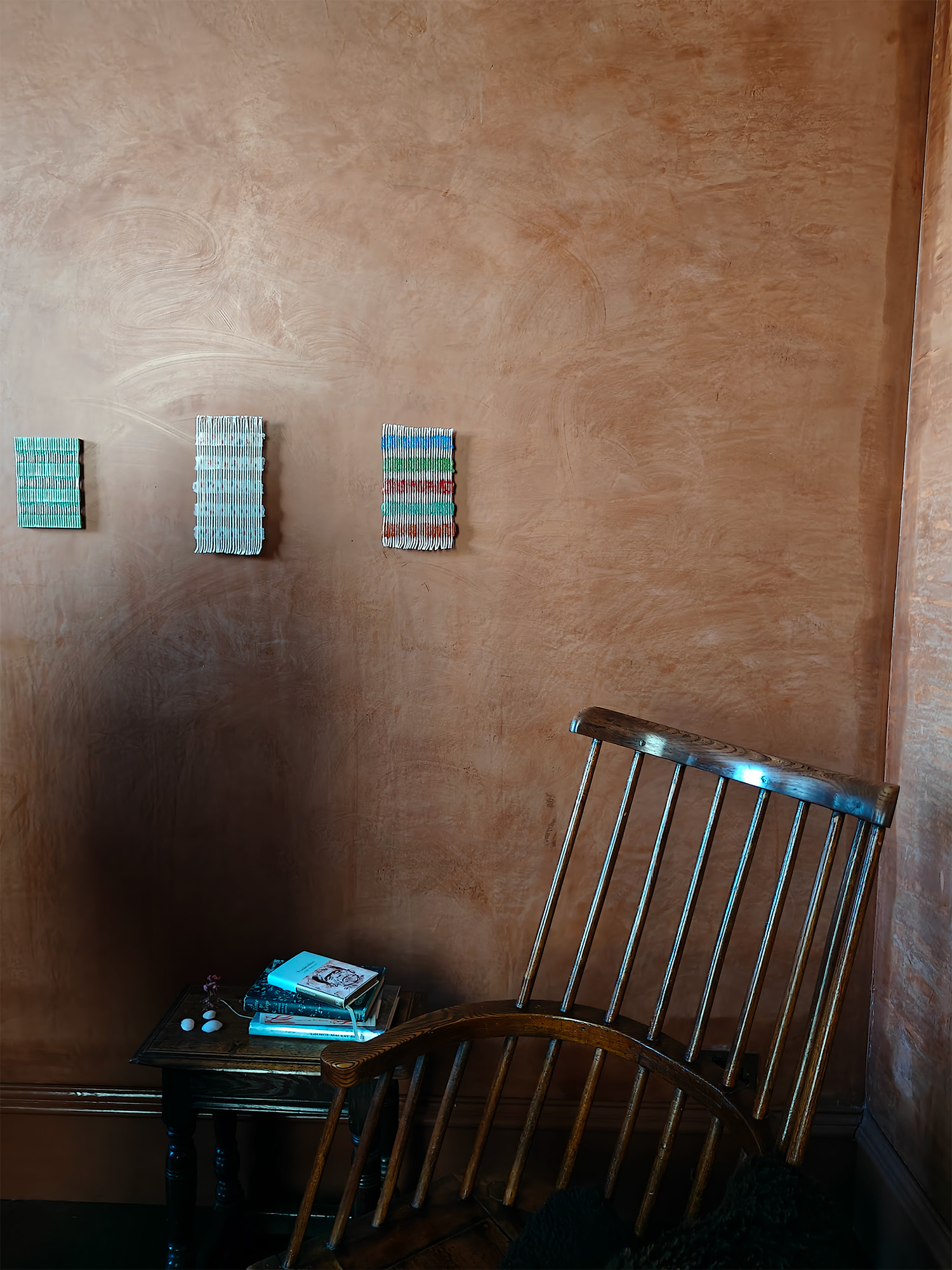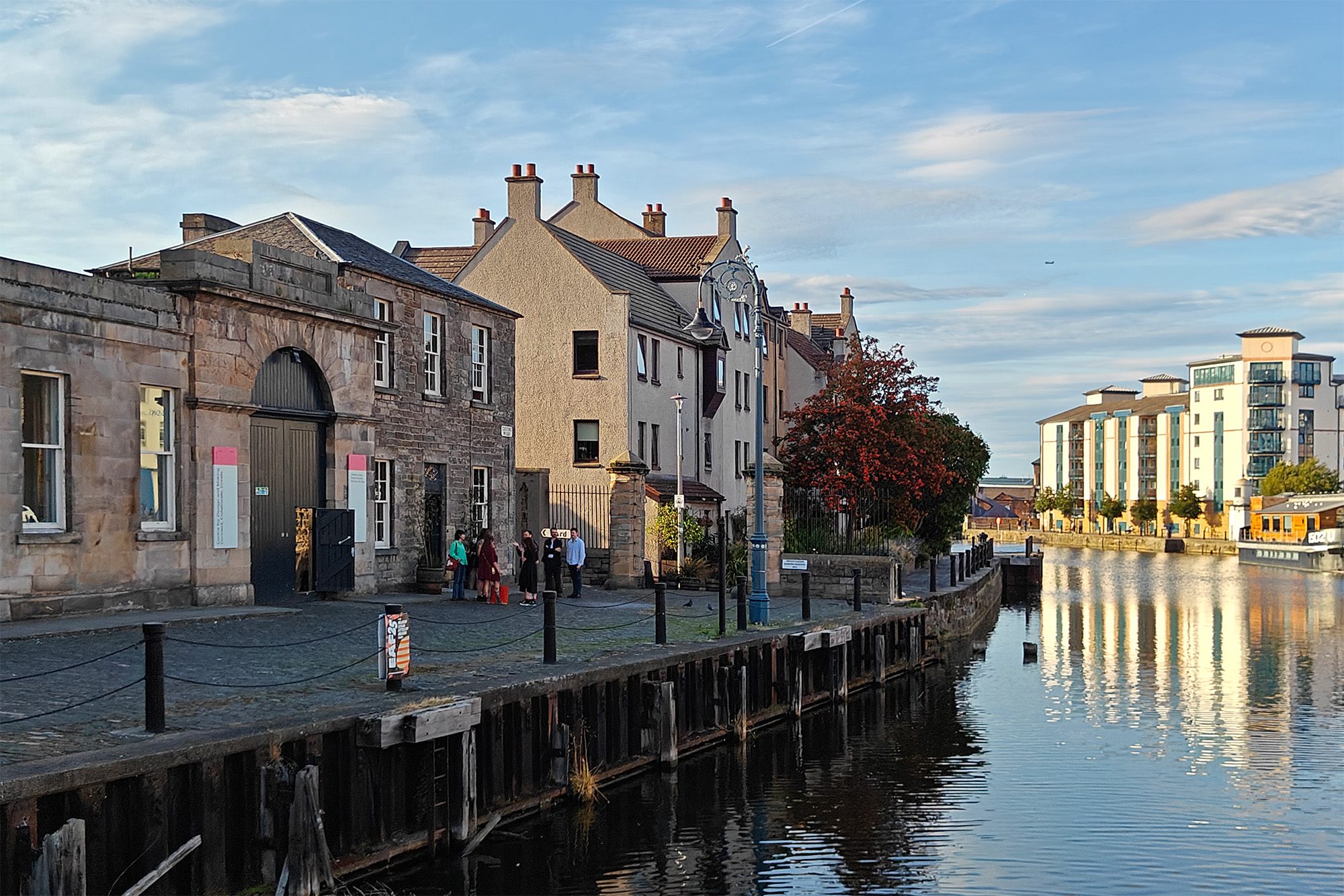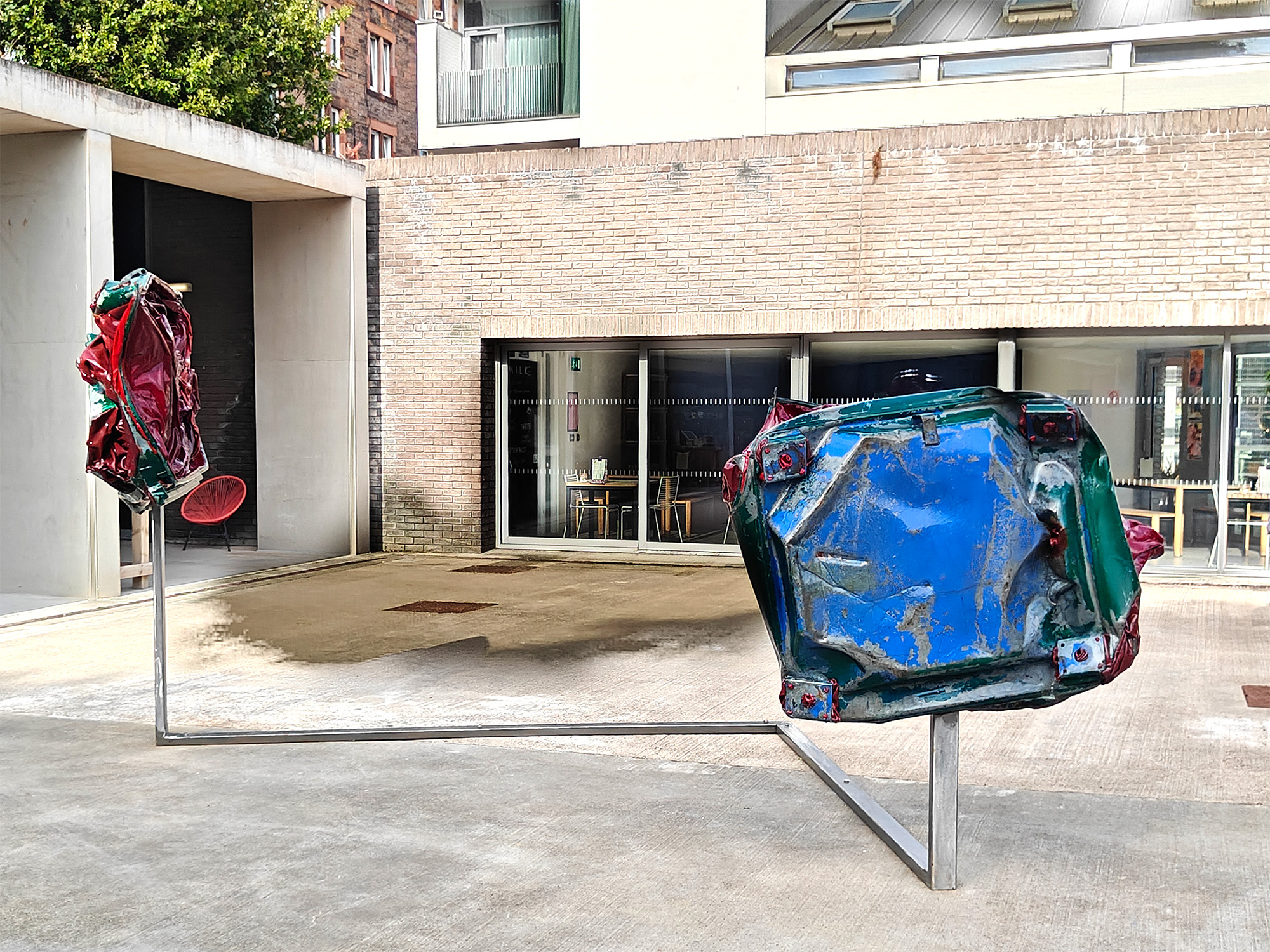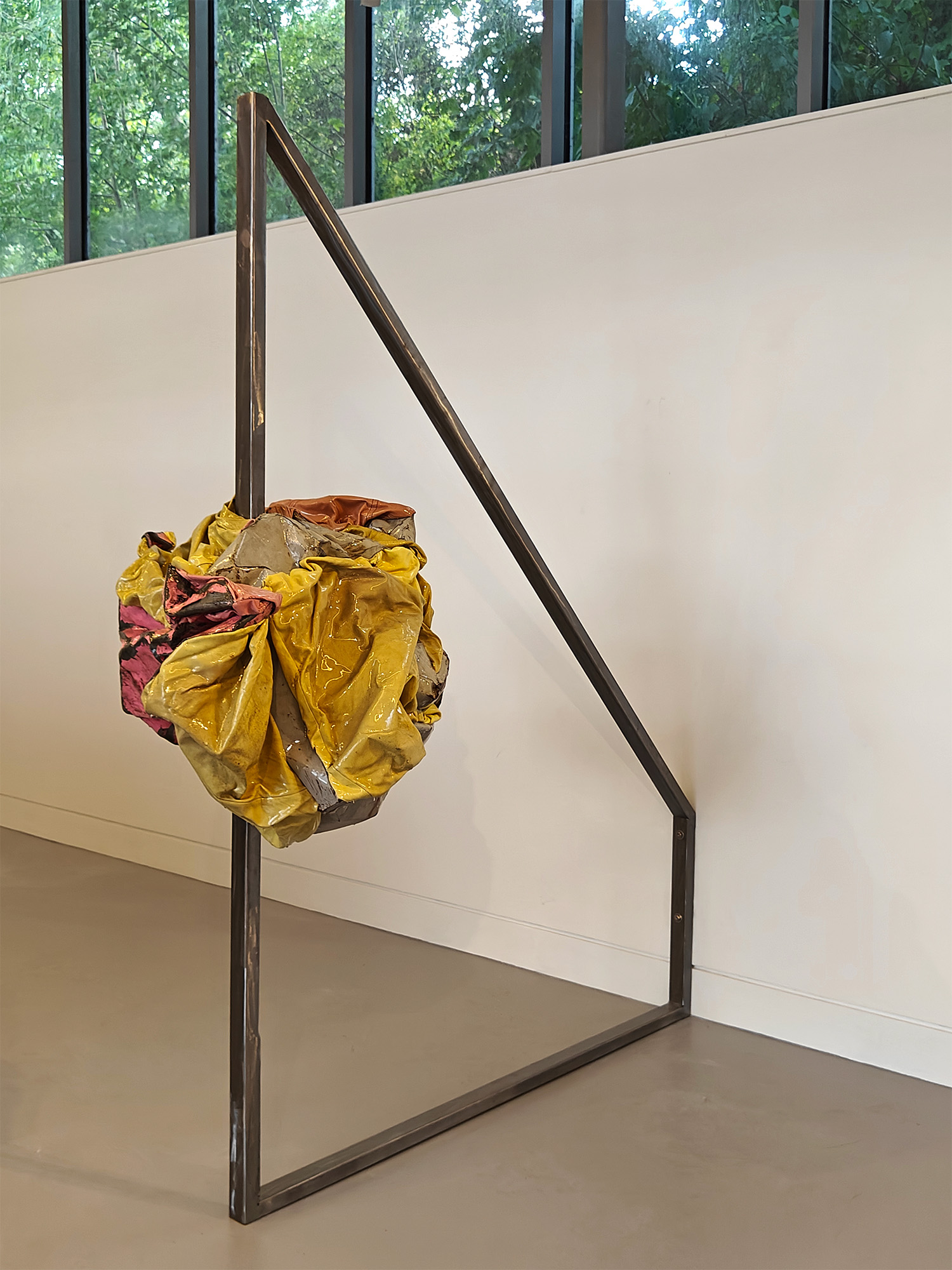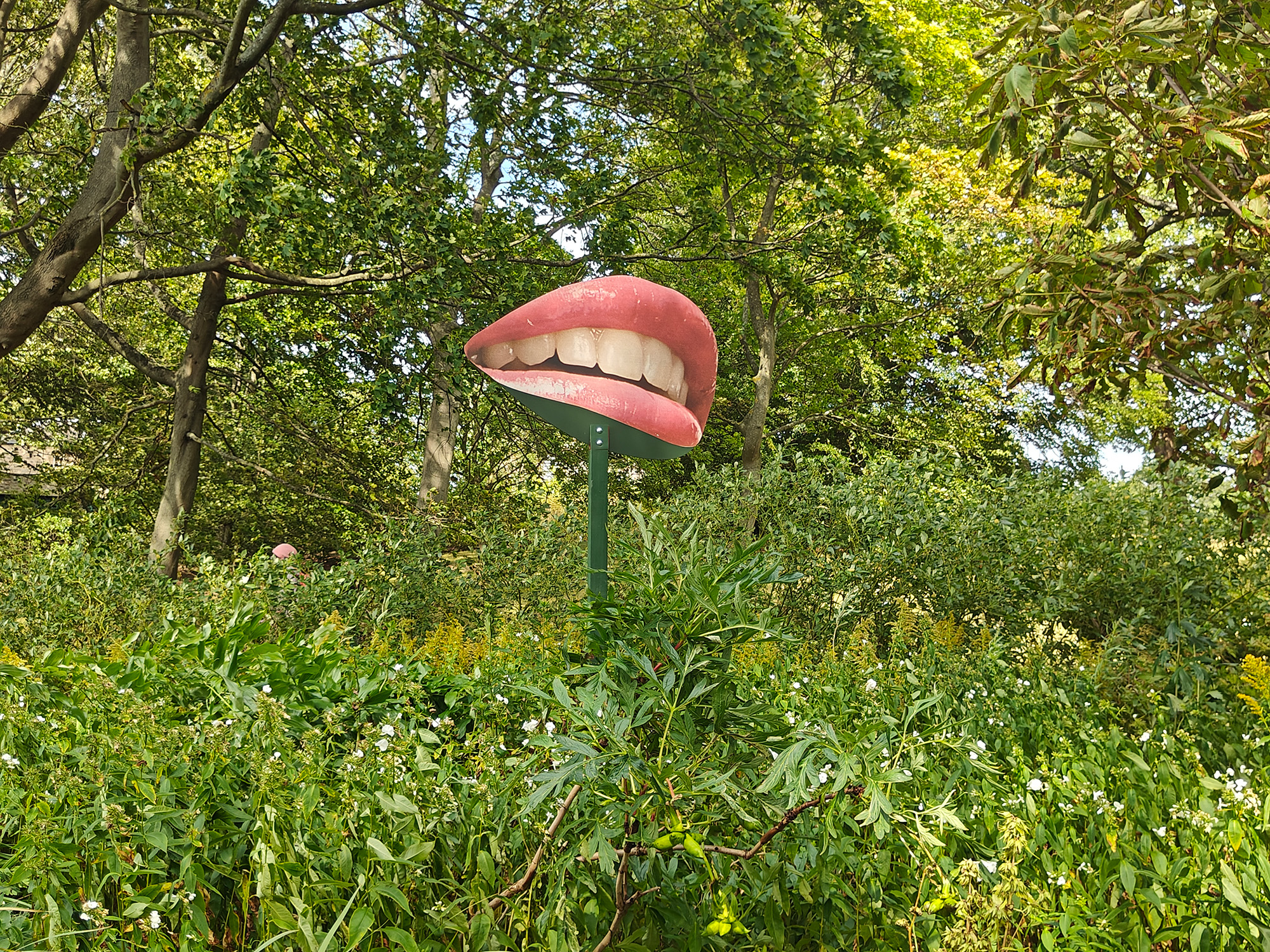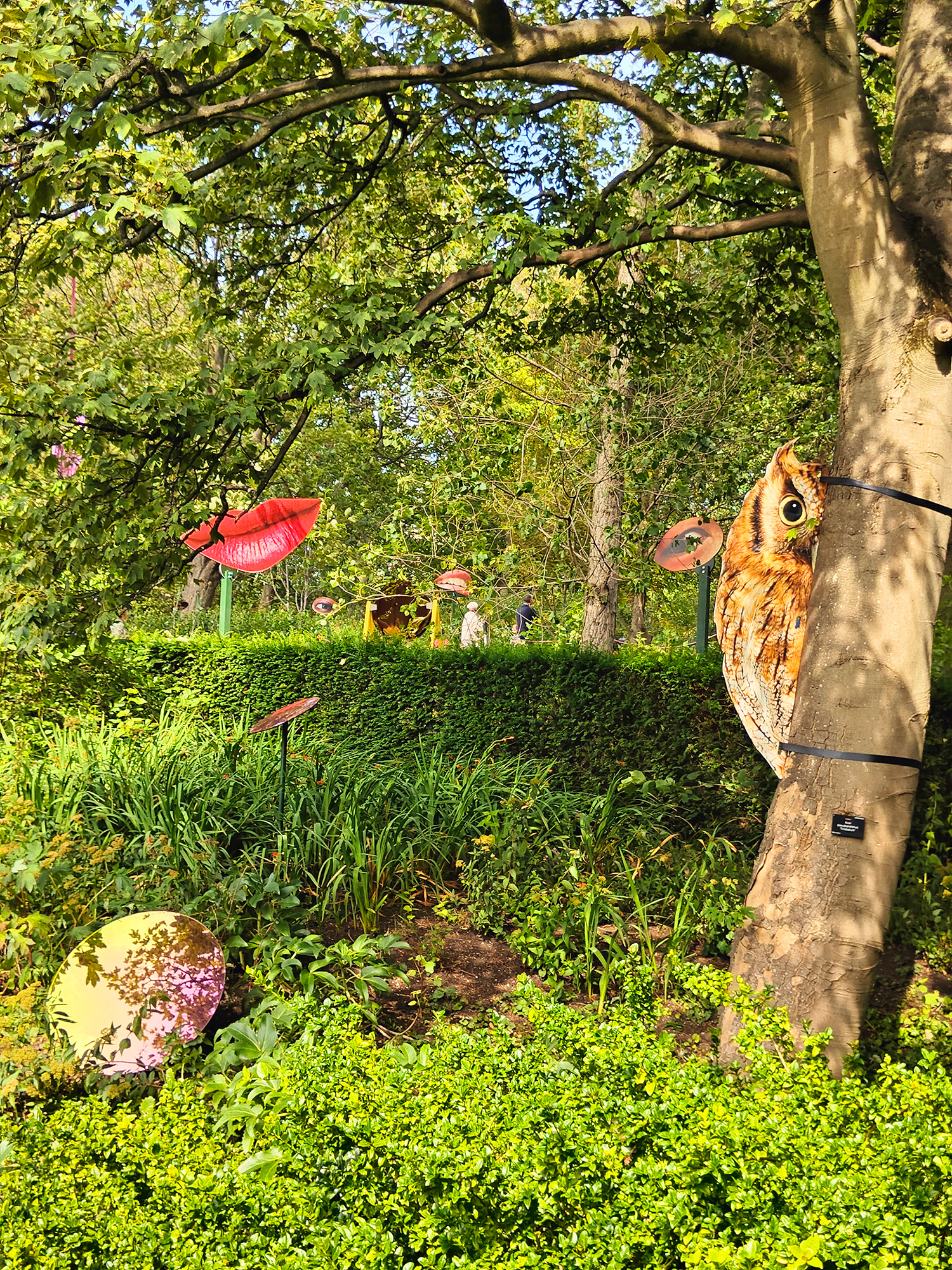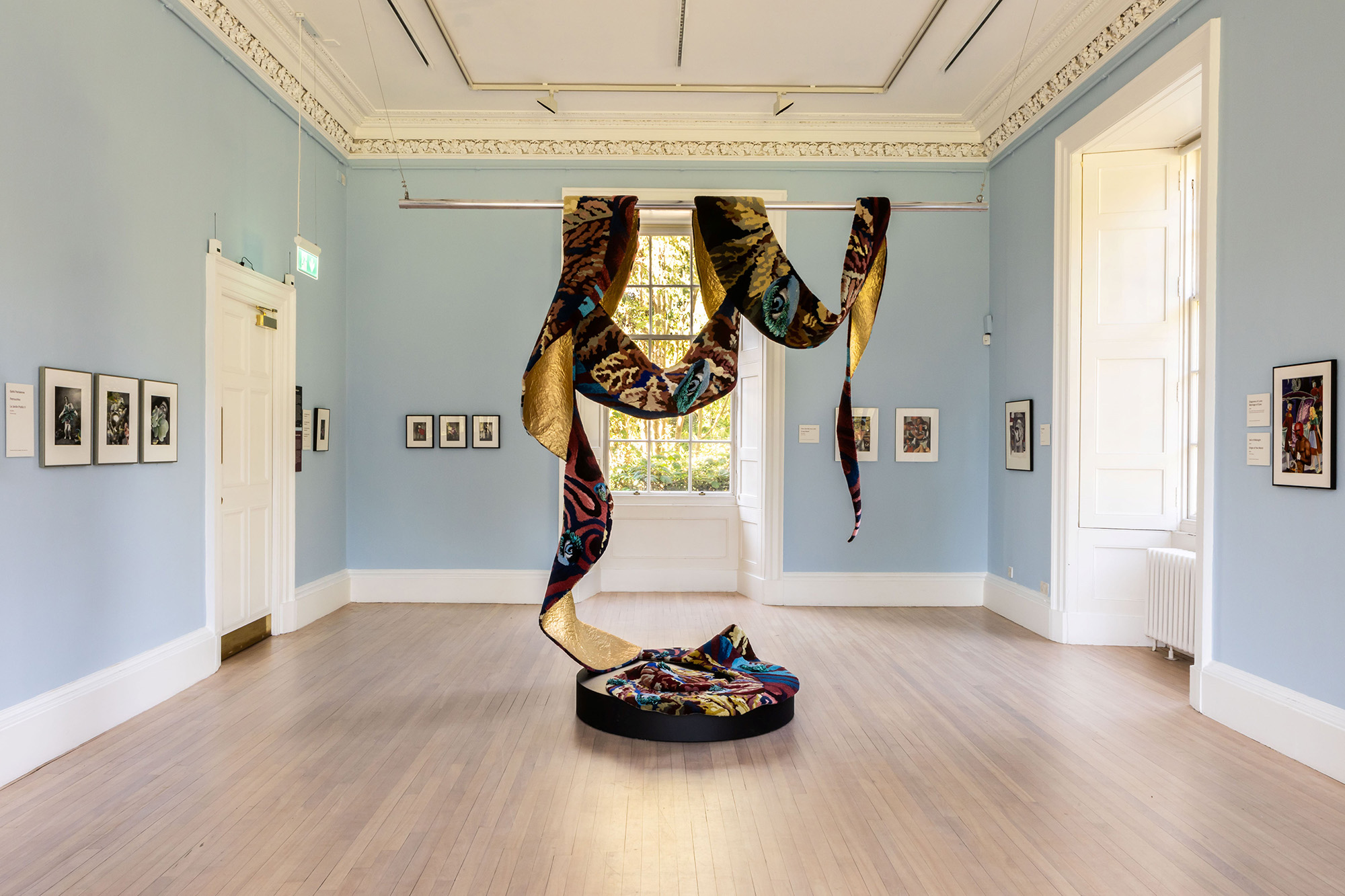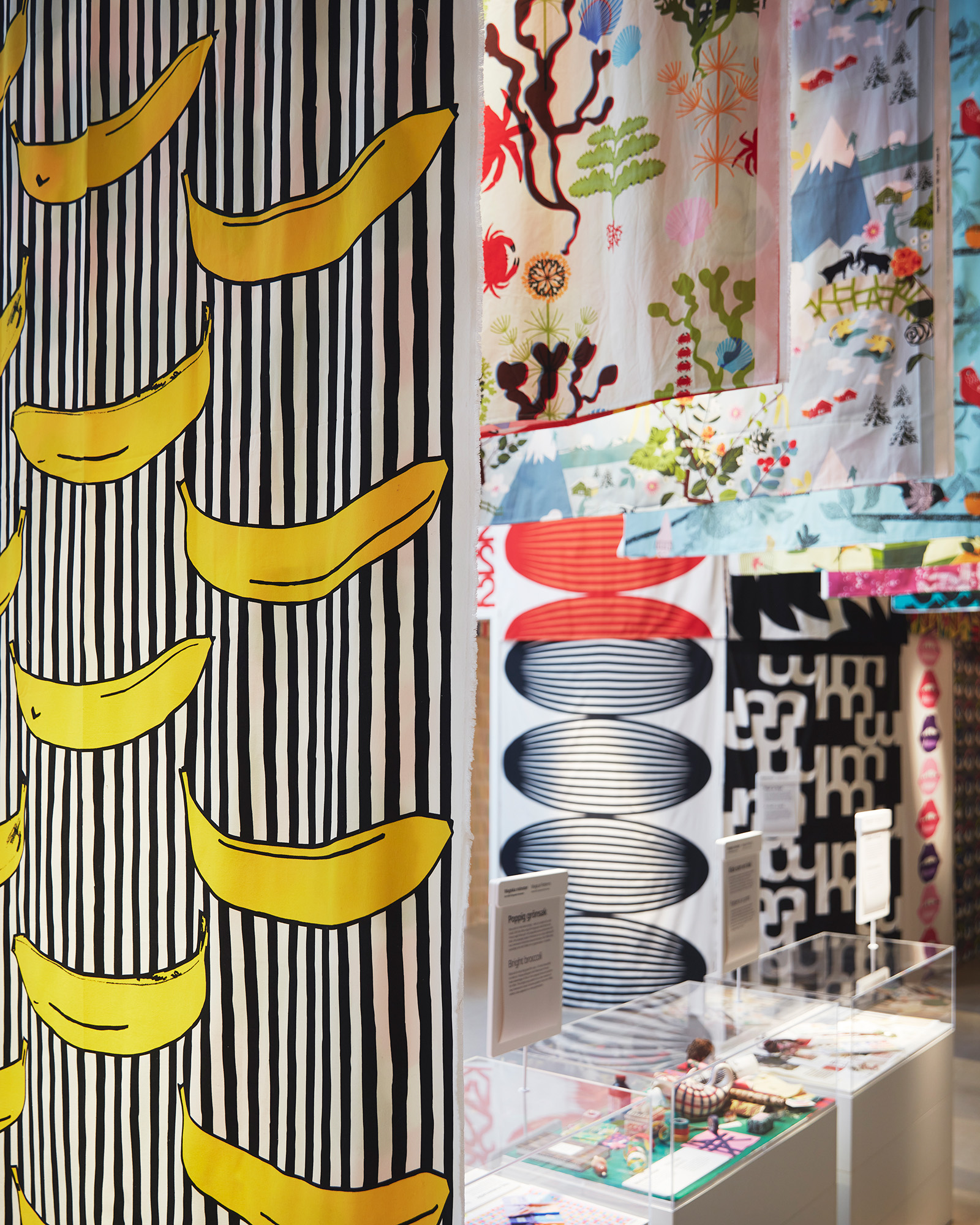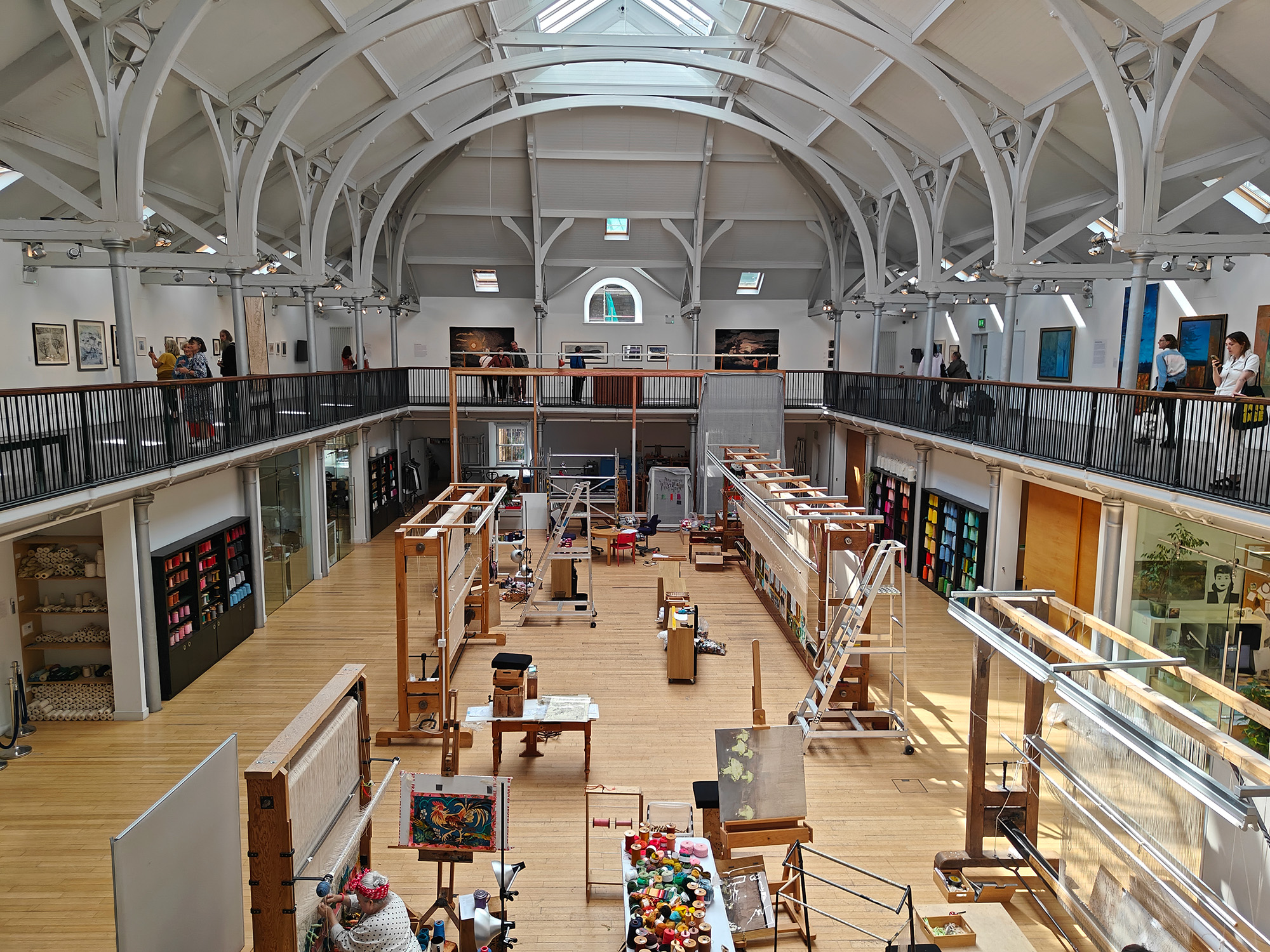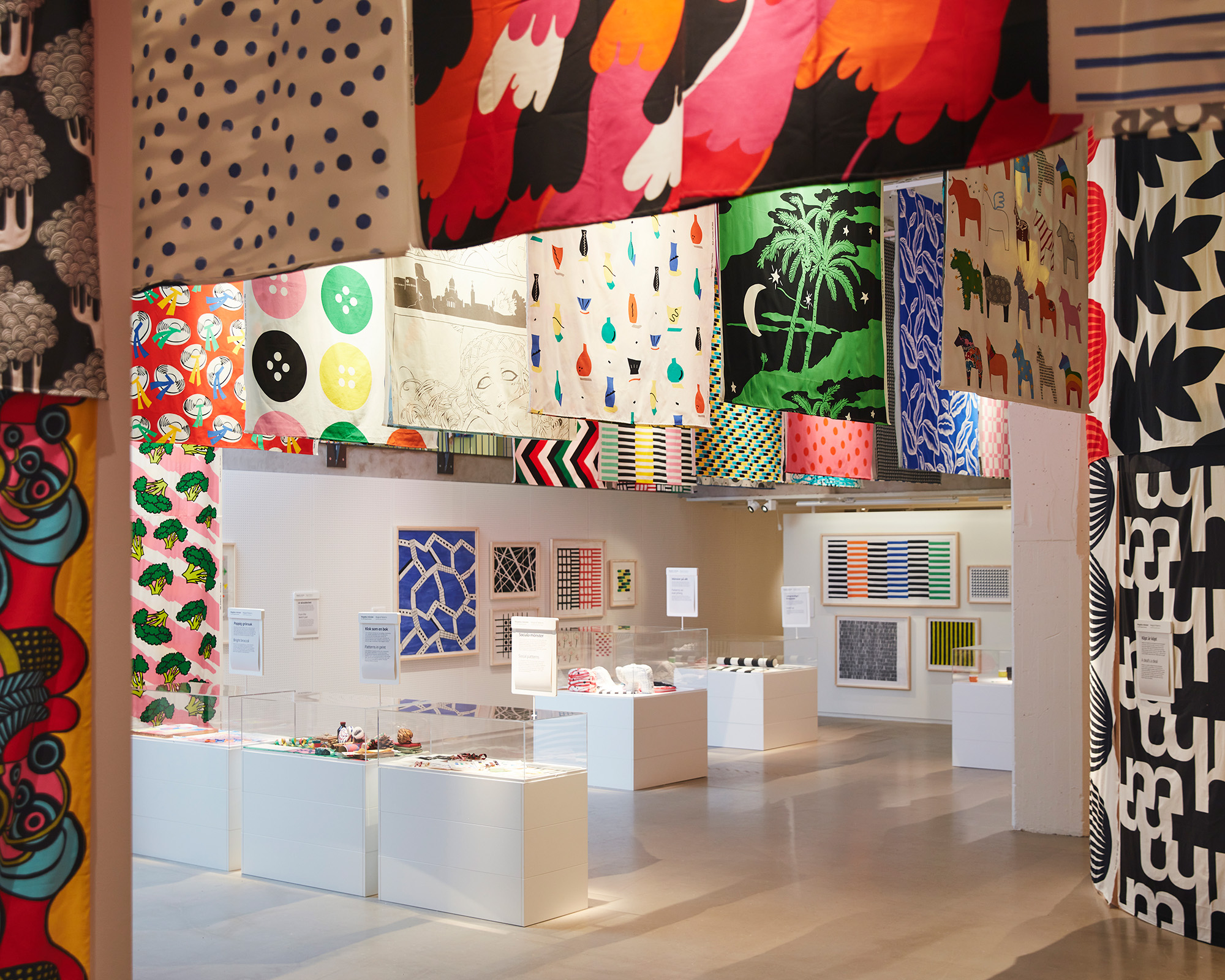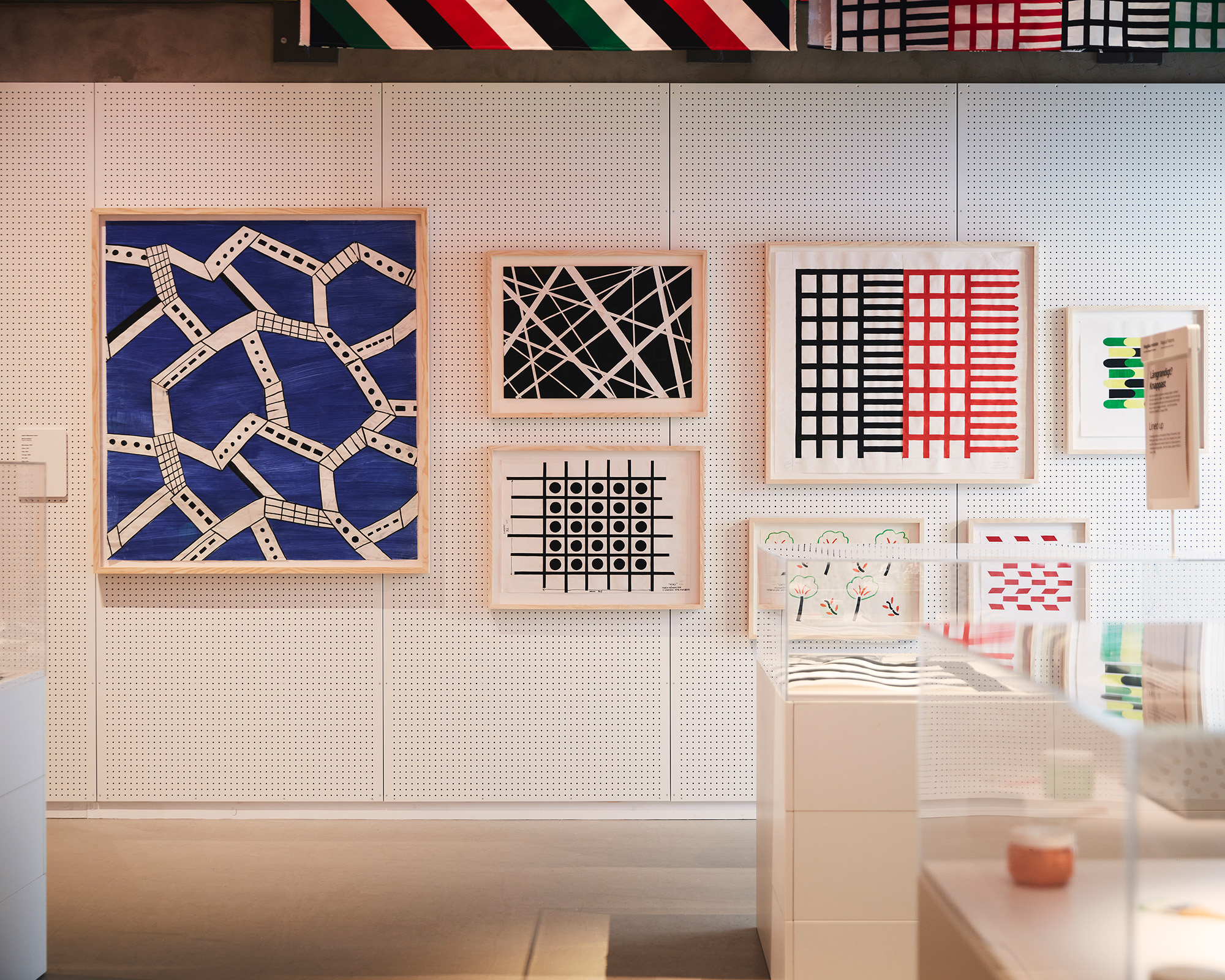Edinburgh Art Festival 2025: our highlights
There’s a lot going on across Edinburgh in August with the
various performing arts festivals, but visitors should make time for the huge amount
of visual art across the city for the annual Edinburgh Art Festival. From the enormity
of a retrospective to land artist Andy Goldsworthy to tiny painted strings of
Brandon Logan, and everything between, we present some of our highlights.
It all happens in Edinburgh in August! Not only is the
Edinburgh International Festival flooding the city with dance, classical music,
and theatre, and small architectural nook turned into a venue for the a Fringe-full
with comedy and theatre, but the 90s revival sounds of Oasis filled the city’s Murrayfield
Stadium over three nights. On top of all that, there’s also the UK’s largest
festival of visual art fighting for cultural audiences and attention.
Edinburgh Art Festival (EAF), a three-week event incorporating new commissions and partner programming, which we last visited in 2023 (see 00124), is currently covering the city with exhibitions, talks, and events. Director Kim McAleese has weaved together 82 exhibitions across 45 partner galleries and venues, but to make it easier for you we have distilled the offering down to some key highlights:
Edinburgh Art Festival (EAF), a three-week event incorporating new commissions and partner programming, which we last visited in 2023 (see 00124), is currently covering the city with exhibitions, talks, and events. Director Kim McAleese has weaved together 82 exhibitions across 45 partner galleries and venues, but to make it easier for you we have distilled the offering down to some key highlights:
OUTER SPACES
EAF HQ
Lewis Hetherington and CJ Mahony
Ellis Jackson Kroese
The EAF HQ is in the entrance to Outer Spaces, a local arts charity who utilise empty office buildings for studio and exhibition space. As well as picking up info on the wider festival, there are two projects presented: Lewis Hetherington and CJ Mahony’s who will be remembered here film and photography; and a display of Ellis Jackson Kroese’s Trans Masc Studies research.
The film connects historical Scottish landscapes with queer lives following research with Historic Environment Scotland. Then four writers, each in a different language & responding to different sites, are presented in an adjoining room alongside landscape images by photographer Tiu Makkonen.
The Trans Masc Studies display (with some excellent merch) presents relics and contributions towards a future archive of masculine-leaning gender diversity in Scotland.
EAF HQ
Lewis Hetherington and CJ Mahony
Ellis Jackson Kroese
The EAF HQ is in the entrance to Outer Spaces, a local arts charity who utilise empty office buildings for studio and exhibition space. As well as picking up info on the wider festival, there are two projects presented: Lewis Hetherington and CJ Mahony’s who will be remembered here film and photography; and a display of Ellis Jackson Kroese’s Trans Masc Studies research.
The film connects historical Scottish landscapes with queer lives following research with Historic Environment Scotland. Then four writers, each in a different language & responding to different sites, are presented in an adjoining room alongside landscape images by photographer Tiu Makkonen.
The Trans Masc Studies display (with some excellent merch) presents relics and contributions towards a future archive of masculine-leaning gender diversity in Scotland.
FRUITMARKET
Mike Nelson
A few weeks ago we published an interview with Mike Nelson on the occasion of a major retrospective at Fruitmarket gallery, which you can read HERE. His show is formed of three parts, each filling one of the gallery’s three spaces, each a unique project and aesthetic approach in itself, but all three talking to each other and with the artist’s history.
The exhibition, Humpty Dumpty a transient history of Mardin earthworks low rise, is hooked upon two of the artist’s former projects, hinted at in the title. The low rise refers to the unfulfilled plans by the artist to reconfigure pre-clad components of the Heygate Estate, a post-war social housing scheme in Elephant and Castle, London, which the council had decanted ahead of a private-profit gentrification, and which Nelson had intended to become Artangel’s largest site-specific project to date. His scheme would have seen several of the emptied flats conjoined into a ziggurat-shaped burial chamber.
In the face of angry local opposition to claims of artwashing and disrespecting the community, the council pulled the arrangement and the project was halted. In Fruitmarket, it is revived in new form. A model of the pyramid can be found at the deepest room of an immersive architecture formed of rooms from the Heygate. After a long gap, Nelson has returned to constructing immersive environments, this one all the more haunting and sinister because of the forced expulsion of working class communities by Southwark Council still present in the wallpaper.
Mike Nelson
A few weeks ago we published an interview with Mike Nelson on the occasion of a major retrospective at Fruitmarket gallery, which you can read HERE. His show is formed of three parts, each filling one of the gallery’s three spaces, each a unique project and aesthetic approach in itself, but all three talking to each other and with the artist’s history.
The exhibition, Humpty Dumpty a transient history of Mardin earthworks low rise, is hooked upon two of the artist’s former projects, hinted at in the title. The low rise refers to the unfulfilled plans by the artist to reconfigure pre-clad components of the Heygate Estate, a post-war social housing scheme in Elephant and Castle, London, which the council had decanted ahead of a private-profit gentrification, and which Nelson had intended to become Artangel’s largest site-specific project to date. His scheme would have seen several of the emptied flats conjoined into a ziggurat-shaped burial chamber.
In the face of angry local opposition to claims of artwashing and disrespecting the community, the council pulled the arrangement and the project was halted. In Fruitmarket, it is revived in new form. A model of the pyramid can be found at the deepest room of an immersive architecture formed of rooms from the Heygate. After a long gap, Nelson has returned to constructing immersive environments, this one all the more haunting and sinister because of the forced expulsion of working class communities by Southwark Council still present in the wallpaper.
Next door in Fruitmarket’s lower gallery are a series
of photos Nelson took in Mardin, Turkey, as part of his project for the city’s 2012
biennial. Present in the room is a hand-drawn map of earthworks around
the city, sites of rupture as the place was rapidly tidied and repaired, as an
archive of a single urban moment in time. The photographs were documents of his
walks to help the drawing, but here are extracted and made into works in their
own right, with purpose made lighting and benches.
The printing of the images took place in the third room of the neighbouring low rise project, Nelson and his team had been resident for weeks ahead of opening building the architectural installation, printing, and also building sculptures. These new sculptures, which use largescale images of the Heygate incporated into forms made of salvaged material – including much from Edinburgh’s buildings – stand as monoliths to another time.
A complicated exhibition with no single entry point – physically or conceptually – it uses architecture and urban form in ways central to Nelson’s practice, material as memory, chimeric constructions as portals, and a constant process of recycling and reforming.
The printing of the images took place in the third room of the neighbouring low rise project, Nelson and his team had been resident for weeks ahead of opening building the architectural installation, printing, and also building sculptures. These new sculptures, which use largescale images of the Heygate incporated into forms made of salvaged material – including much from Edinburgh’s buildings – stand as monoliths to another time.
A complicated exhibition with no single entry point – physically or conceptually – it uses architecture and urban form in ways central to Nelson’s practice, material as memory, chimeric constructions as portals, and a constant process of recycling and reforming.
STILLS
Siân Davey
Beginning in 2020 and continuing over COVID, Siân Davey and her son Luke began transforming their unkempt garden into a wildflower oasis, encouraging biodiversity. As society began to open up again, Davey found that the garden also became a place the local community came to, to be in nature, share stories, and regrow. The artist began to photograph her neighbours and family in the space, humans at one with each other and with a vibrant nature.
It became a place, the artist says, for “The mothers and daughters, the lonely, the marginalised, new lovers, the traumatised and heartbroken and those that had concealed a lifetime of shame.” Her images capture that sense of peace and resilience, and both human and nonhuman growth.
Siân Davey
Beginning in 2020 and continuing over COVID, Siân Davey and her son Luke began transforming their unkempt garden into a wildflower oasis, encouraging biodiversity. As society began to open up again, Davey found that the garden also became a place the local community came to, to be in nature, share stories, and regrow. The artist began to photograph her neighbours and family in the space, humans at one with each other and with a vibrant nature.
It became a place, the artist says, for “The mothers and daughters, the lonely, the marginalised, new lovers, the traumatised and heartbroken and those that had concealed a lifetime of shame.” Her images capture that sense of peace and resilience, and both human and nonhuman growth.
EDINBURGH PRINTMAKERS
Robert Powell
Aqsa Arif
With nearly 300 members, Edinburgh Printmakers is the largest organisation dedicated to the art of printing in Europe. It fills a wonderful 19th century industrial building, the only remaining piece of a complex that was once home to a rubber company that employed 8,000 people creating products including the first Wellington Boots as well as traffic cones, and hot water bottles.
When Printmakers took over the building as a community hub it not only rescued a building at risk of demolition, but has become a key part of the city’s cultural ecosystem. As well as a huge floor of printing apparatus, two gallery spaces, a shop, and café support diverse cultural output. In one, exquisite imagery from Robert Powell considers how we experience and understand time. A series of intricate and playful printed works all coming together in a room-filling animated clock in which scenes replace the clockface numbers and prints combine to create the body.
Upstairs, a wonderful work by Aqsa Arif takes the high-rise Glasgow block the artist grew up in after moving to the UK with her family as an asylum seeker. The flats achieved global fame when they were used by director Jonathan Glazer in a spectacular £2m advert for Sony Bravia, his film exploding 70,000 litres of colourful paint across the building. Ahead of the filming, Arif and other residents – a largely immigrant population – were displaced and rehoused. Alongside a film exploring this architectural and social history, Arif presents a series of ornate wall-based works comprising personal and cultural aesthetics along with ideas of assimilation, identity, and resistance.
Robert Powell
Aqsa Arif
With nearly 300 members, Edinburgh Printmakers is the largest organisation dedicated to the art of printing in Europe. It fills a wonderful 19th century industrial building, the only remaining piece of a complex that was once home to a rubber company that employed 8,000 people creating products including the first Wellington Boots as well as traffic cones, and hot water bottles.
When Printmakers took over the building as a community hub it not only rescued a building at risk of demolition, but has become a key part of the city’s cultural ecosystem. As well as a huge floor of printing apparatus, two gallery spaces, a shop, and café support diverse cultural output. In one, exquisite imagery from Robert Powell considers how we experience and understand time. A series of intricate and playful printed works all coming together in a room-filling animated clock in which scenes replace the clockface numbers and prints combine to create the body.
Upstairs, a wonderful work by Aqsa Arif takes the high-rise Glasgow block the artist grew up in after moving to the UK with her family as an asylum seeker. The flats achieved global fame when they were used by director Jonathan Glazer in a spectacular £2m advert for Sony Bravia, his film exploding 70,000 litres of colourful paint across the building. Ahead of the filming, Arif and other residents – a largely immigrant population – were displaced and rehoused. Alongside a film exploring this architectural and social history, Arif presents a series of ornate wall-based works comprising personal and cultural aesthetics along with ideas of assimilation, identity, and resistance.
TALBOT RICE
Wael Shawky
Secreted in the upper floors of one of Edinburgh University’s many grand buildings are the spectacular neoclassical galleries of contemporary art space Talbot Rice. They make for the perfect setting for Wael Shawky’s Drama 1882, originally shown within the Egyptian Pavilion at the 2024 Venice Biennale. Shawky rewrites and reconsiders colonial histories in richly presented operatic films, in this instance focusing on a café in Alexandria in 1882, exploring the roots of a conflict which ultimately led to Britain’s occupation of Egypt until 1956.
Shawky’s storytelling is deep and rich in content, simultaneously humourous and dark, truthful and slippery. Another work, Cabaret Crusades, is shown in an adjoining gallery, similarly theatrical but using ornately sculpted marionettes recounting an Arab historical account of the Crusades. The marionettes and other works by Shawky are presented in other gallery spaces, in a compelling exhibition – at a perfect moment as both the university and wider society interrogate relationships to colonial legacies.
Wael Shawky
Secreted in the upper floors of one of Edinburgh University’s many grand buildings are the spectacular neoclassical galleries of contemporary art space Talbot Rice. They make for the perfect setting for Wael Shawky’s Drama 1882, originally shown within the Egyptian Pavilion at the 2024 Venice Biennale. Shawky rewrites and reconsiders colonial histories in richly presented operatic films, in this instance focusing on a café in Alexandria in 1882, exploring the roots of a conflict which ultimately led to Britain’s occupation of Egypt until 1956.
Shawky’s storytelling is deep and rich in content, simultaneously humourous and dark, truthful and slippery. Another work, Cabaret Crusades, is shown in an adjoining gallery, similarly theatrical but using ornately sculpted marionettes recounting an Arab historical account of the Crusades. The marionettes and other works by Shawky are presented in other gallery spaces, in a compelling exhibition – at a perfect moment as both the university and wider society interrogate relationships to colonial legacies.
NATIONAL GALLERIES OF SCOTLAND
Andy Goldsworthy
Land art can be a difficult form to present in a gallery context. Andy Goldsworthy’s projects can not only cover vast terrains, but also exist over a long period of time, for example his Stone Coppice at Jupiter Artland (see 00201) in which over 16 years the rocks placed between branches of coppiced trees have both moved and moved the growth of the trees they sit within. Here, across 11 rooms 50 years of Goldsworthy’s practice are explored through archive documentation and largescale new works created for the specific architectural qualities of the galleries.
It begins with a wool runner cascading down the staircase visitors need to ascend to the opening galleries – made by the artist using thorns to attach fleece to netting, then marked with colour coding used by farmers. Once upstairs, a taut barbed wire barrier stops visitors entering the first neoclassical gallery. It’s a material Goldsworthy has long used, knowing how to handle it (and protect historic architecture from it), here employed to speak to the nature of landscape not as open land but of barriers, division, man-made intervention, and violence.
Andy Goldsworthy
Land art can be a difficult form to present in a gallery context. Andy Goldsworthy’s projects can not only cover vast terrains, but also exist over a long period of time, for example his Stone Coppice at Jupiter Artland (see 00201) in which over 16 years the rocks placed between branches of coppiced trees have both moved and moved the growth of the trees they sit within. Here, across 11 rooms 50 years of Goldsworthy’s practice are explored through archive documentation and largescale new works created for the specific architectural qualities of the galleries.
It begins with a wool runner cascading down the staircase visitors need to ascend to the opening galleries – made by the artist using thorns to attach fleece to netting, then marked with colour coding used by farmers. Once upstairs, a taut barbed wire barrier stops visitors entering the first neoclassical gallery. It’s a material Goldsworthy has long used, knowing how to handle it (and protect historic architecture from it), here employed to speak to the nature of landscape not as open land but of barriers, division, man-made intervention, and violence.
The new works continue across the floor, room after room of
remarkable set piece made for the qualities of the space and visitor’s
circulation. A room is full of stones displaced from 108 graveyards in Dumfries,
here acting as memorials to interrupted lives and places, lit only by natural
light from the skylight above. A large wall has been clad in cracked Scottish red
earth. A mass of oak branches seems to part like the Red Sea, a balance between
linear order and the forms of nature. Huundreds of meticulously connected bullrushes
hang around the geometric form of another skylight, carving a space of rural
sanctity in this most architectural of spaces.
Goldsworthy’s seminal earlier works are brought into the space through archive drawings, photography, and video in displays that should not be overlooked amongst the Instagrammable and sublime installations. British land art is an important movement now coming of age, and this exhibition sets a new benchmark in how the oeuvre can be presented within a gallery – Goldsworthy, a master at reading and playing with space, extends his landscape practice into the gallery architecture, finding harmonious results.
Goldsworthy’s seminal earlier works are brought into the space through archive drawings, photography, and video in displays that should not be overlooked amongst the Instagrammable and sublime installations. British land art is an important movement now coming of age, and this exhibition sets a new benchmark in how the oeuvre can be presented within a gallery – Goldsworthy, a master at reading and playing with space, extends his landscape practice into the gallery architecture, finding harmonious results.
Bard
Brandon Logan
Partnering with Ingleby Gallery for EAF25, lifestyle, design, and carefully crafted ephemera shop Bard has positioned works by Orcadian artist Brandon Logan within its artfully curated rooms. Having studied at Edinburgh College of Art, Logan’s works are small and delicate, weaving string within layers of acrylic paint, forming works that sit between abstract colourfields and intimate poetic punctuation throughout Bard’s busy rooms.
The objects that keep the eye busy throughout Bard are equally as carefully created. Created by owners Hugo Macdonald and James Stevens to celebrate Scottish design, their base is in Custom Lane in Leith and they sit as part of a makers’ community and collaborative centre for design. They curate an eclectic mix, from the extremely useful like the handblown glass bowls by at David Kaplan and Annica Sandström of Lindean Mill Glass, to the immaculately and beautifully made leather wrapped stones by Jess White, which perhaps once had function as neolithic executive stress toys.
Brandon Logan
Partnering with Ingleby Gallery for EAF25, lifestyle, design, and carefully crafted ephemera shop Bard has positioned works by Orcadian artist Brandon Logan within its artfully curated rooms. Having studied at Edinburgh College of Art, Logan’s works are small and delicate, weaving string within layers of acrylic paint, forming works that sit between abstract colourfields and intimate poetic punctuation throughout Bard’s busy rooms.
The objects that keep the eye busy throughout Bard are equally as carefully created. Created by owners Hugo Macdonald and James Stevens to celebrate Scottish design, their base is in Custom Lane in Leith and they sit as part of a makers’ community and collaborative centre for design. They curate an eclectic mix, from the extremely useful like the handblown glass bowls by at David Kaplan and Annica Sandström of Lindean Mill Glass, to the immaculately and beautifully made leather wrapped stones by Jess White, which perhaps once had function as neolithic executive stress toys.
EDINBURGH SCULPTURE WORKSHOP
Louise Gibson
A short walk across Leigh and you will find the campus of Edinburgh Sculpture Workshop, excellently designed by Sutherland Hussey Harris Architects. Their buildings are open and porous, allowing the local community to not just see in and across the courtyard to see what’s being made, but also join in with public events, workshops, or grab some food at the café. Like Printmakers, ESW is a longrunning cultural centre that’s at the heart of Edinburgh’s artistic community and ecosystem.
They also have a neat gallery space, currently occupied by Louise Gibson’s Beachheads series. Totems of late capitalism, with a JG Ballard meets Francis Bacon aesthetic, they are made of discarded industrial and domestic goods, compressed, distorted, and reconfigured beyond any recognisable state. In the gallery, the sculptures are made of a radiator, two baths, and a filing cabinet. Outside in the courtyard, larger works are formed from car doors and industrial wheelie bins are presented like medieval heads on spikes.
There is more to these works than just fucking around with material waste. Gibson uses other materials such as resin, laquer and PU leather to play with material expectation, further deteriorate binaries, and invoke a sense of meat, innards, and abattoir to these redundant goods. Objects turned inside out, waste imbued with value, and abandonment given meaning.
Louise Gibson
A short walk across Leigh and you will find the campus of Edinburgh Sculpture Workshop, excellently designed by Sutherland Hussey Harris Architects. Their buildings are open and porous, allowing the local community to not just see in and across the courtyard to see what’s being made, but also join in with public events, workshops, or grab some food at the café. Like Printmakers, ESW is a longrunning cultural centre that’s at the heart of Edinburgh’s artistic community and ecosystem.
They also have a neat gallery space, currently occupied by Louise Gibson’s Beachheads series. Totems of late capitalism, with a JG Ballard meets Francis Bacon aesthetic, they are made of discarded industrial and domestic goods, compressed, distorted, and reconfigured beyond any recognisable state. In the gallery, the sculptures are made of a radiator, two baths, and a filing cabinet. Outside in the courtyard, larger works are formed from car doors and industrial wheelie bins are presented like medieval heads on spikes.
There is more to these works than just fucking around with material waste. Gibson uses other materials such as resin, laquer and PU leather to play with material expectation, further deteriorate binaries, and invoke a sense of meat, innards, and abattoir to these redundant goods. Objects turned inside out, waste imbued with value, and abandonment given meaning.
ROYAL BOTANICAL GARDENS EDINBURGH
Linder
It may seem an unexpected juxtaposition to present the work of Linder within the planting and nature of the Royal Botanical Gardens, but it works. An artist who for five decades has used montage and collage of popular culture images to queer normative ideas on gender and sexuality, this is an edited version of Linder’s exhibition recently presented at London’s Hayward Gallery. Here, within domestic-scale rooms, the curation of Linder’s work is far more successful than within the large gallery brutalism of the Hayward. Here, in a sequence of small rooms, the presentation is intimate, inviting proximity and pause to consider not only the craft but the politics within each overlay.
Beautifully, it also leaks from the confines of the gallery into the gardens. Oversized pop art fragments litter the areas around a zig-zag path. A badger creeps out behind a tree, lips hover in the branches, mirrors interrupt, and it’s a delightfully playful intervention with the place, collaging landscape with image.
Linder
It may seem an unexpected juxtaposition to present the work of Linder within the planting and nature of the Royal Botanical Gardens, but it works. An artist who for five decades has used montage and collage of popular culture images to queer normative ideas on gender and sexuality, this is an edited version of Linder’s exhibition recently presented at London’s Hayward Gallery. Here, within domestic-scale rooms, the curation of Linder’s work is far more successful than within the large gallery brutalism of the Hayward. Here, in a sequence of small rooms, the presentation is intimate, inviting proximity and pause to consider not only the craft but the politics within each overlay.
Beautifully, it also leaks from the confines of the gallery into the gardens. Oversized pop art fragments litter the areas around a zig-zag path. A badger creeps out behind a tree, lips hover in the branches, mirrors interrupt, and it’s a delightfully playful intervention with the place, collaging landscape with image.
DOVECOT STUDIOS
IKEA: Magical Patterns
For over a century, Dovecot has hand-woven tapestries and rugs and for the last 17 years they have been operating from a repurposed Victorian baths in the centre of Edinburgh that were otherwise facing demolition. The former swimming pool balcony now offers a perfect viewing platform from which to watch over leading weavers, often making pieces commissioned by and for leading contemporary artists.
Dovecot’s ground floor gallery presents exhibitions with histories and works adjacent to the crafts going on elsewhere in the building. Coinciding with EAF25 is a look at the history of pattern in IKEA’s archive, and it offers a rich gaze into decades of changing aesthetics. The Swedish company have previously worked with leading designers including Zandra Rhodes, but it’s the works by their inhouse designers that are most interesting.
Amongst the layers of hanging patterned materials, vitrines show the sketchbooks, drawings, and tests of an artistic process that went from a single designer’s idea into living rooms across the world. Small text panels offer insight and anecdotes to remind that curious stories can lurk behind designs that six decades of homeowners might otherwise have taken for granted.
IKEA: Magical Patterns
For over a century, Dovecot has hand-woven tapestries and rugs and for the last 17 years they have been operating from a repurposed Victorian baths in the centre of Edinburgh that were otherwise facing demolition. The former swimming pool balcony now offers a perfect viewing platform from which to watch over leading weavers, often making pieces commissioned by and for leading contemporary artists.
Dovecot’s ground floor gallery presents exhibitions with histories and works adjacent to the crafts going on elsewhere in the building. Coinciding with EAF25 is a look at the history of pattern in IKEA’s archive, and it offers a rich gaze into decades of changing aesthetics. The Swedish company have previously worked with leading designers including Zandra Rhodes, but it’s the works by their inhouse designers that are most interesting.
Amongst the layers of hanging patterned materials, vitrines show the sketchbooks, drawings, and tests of an artistic process that went from a single designer’s idea into living rooms across the world. Small text panels offer insight and anecdotes to remind that curious stories can lurk behind designs that six decades of homeowners might otherwise have taken for granted.



